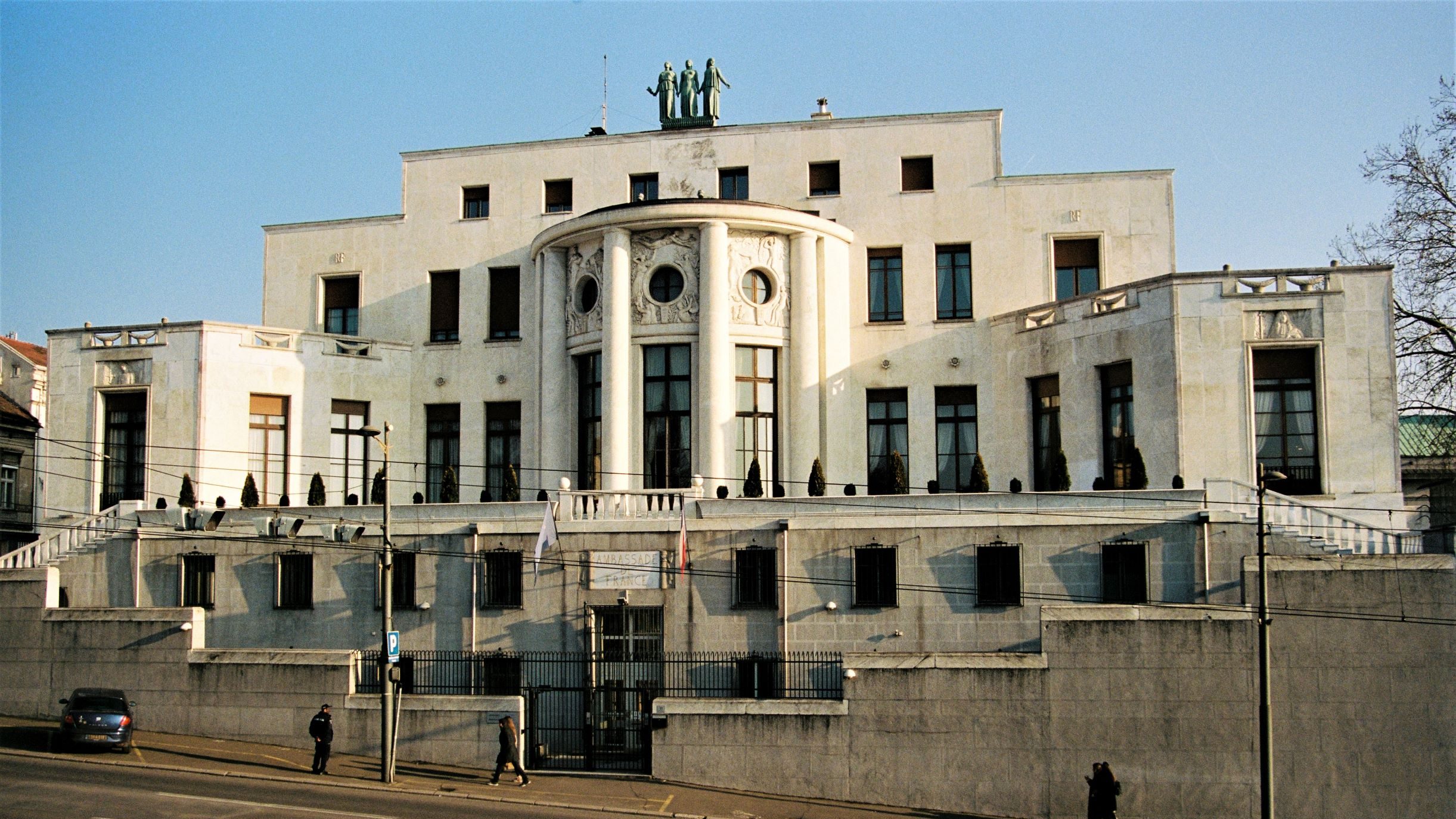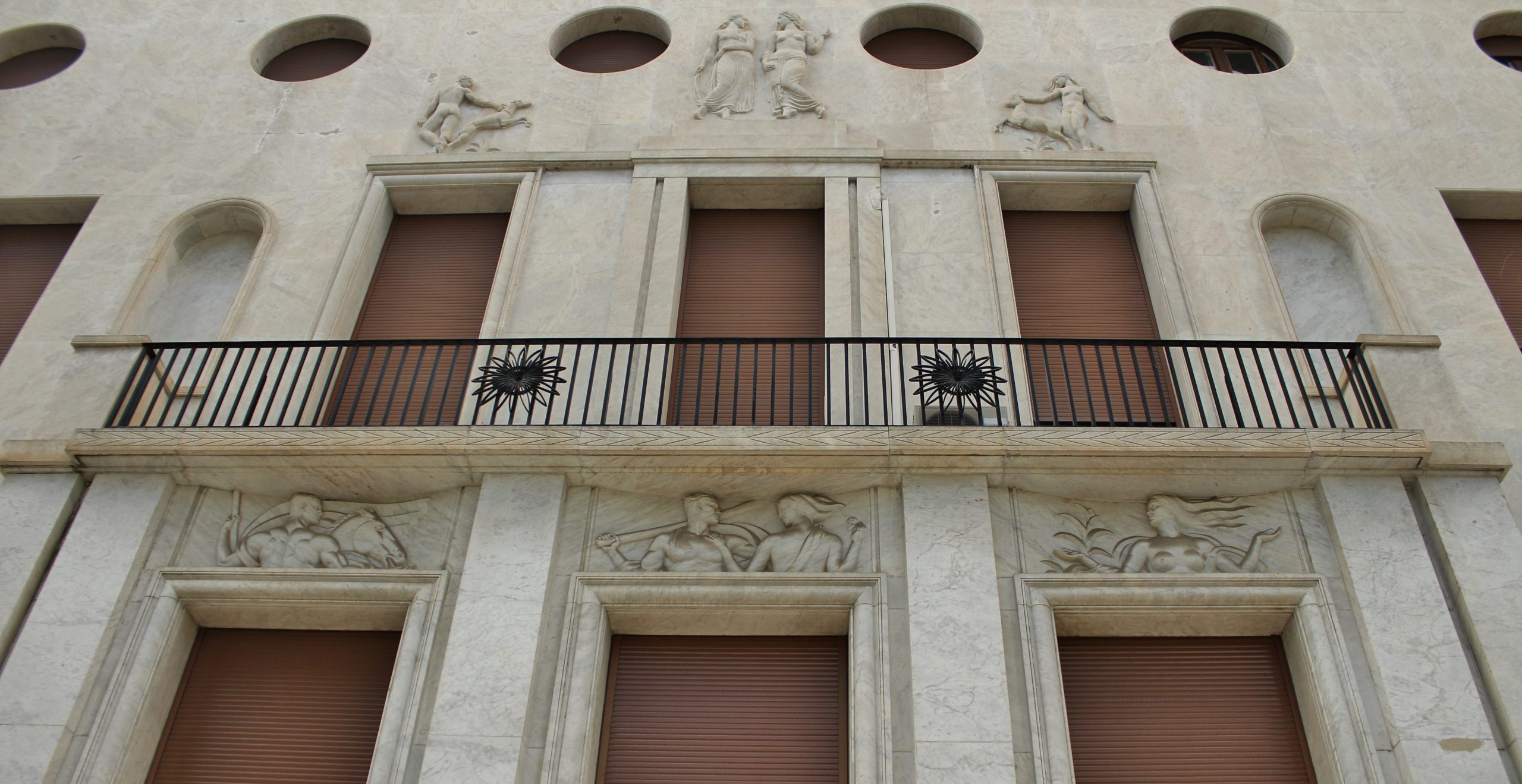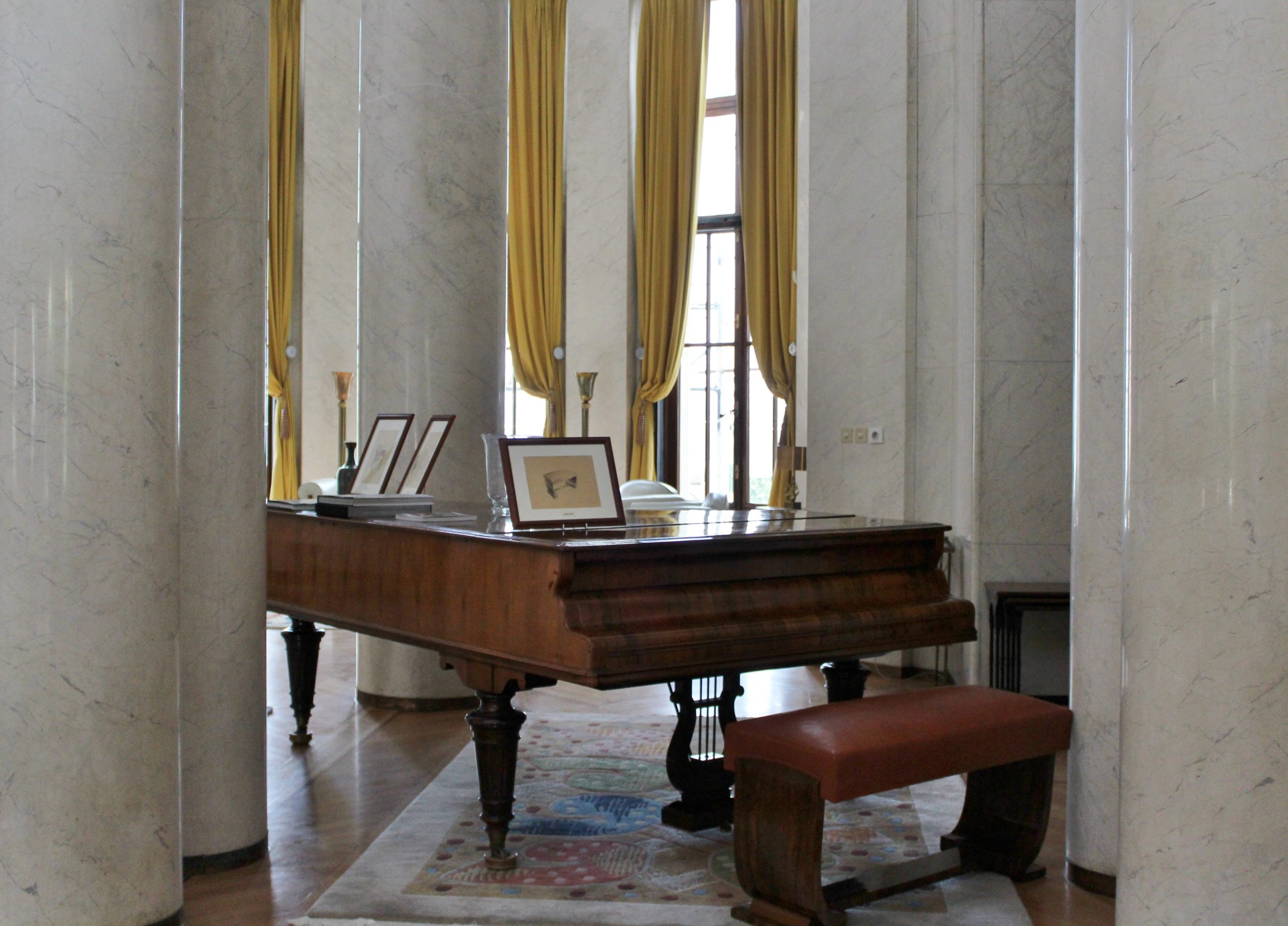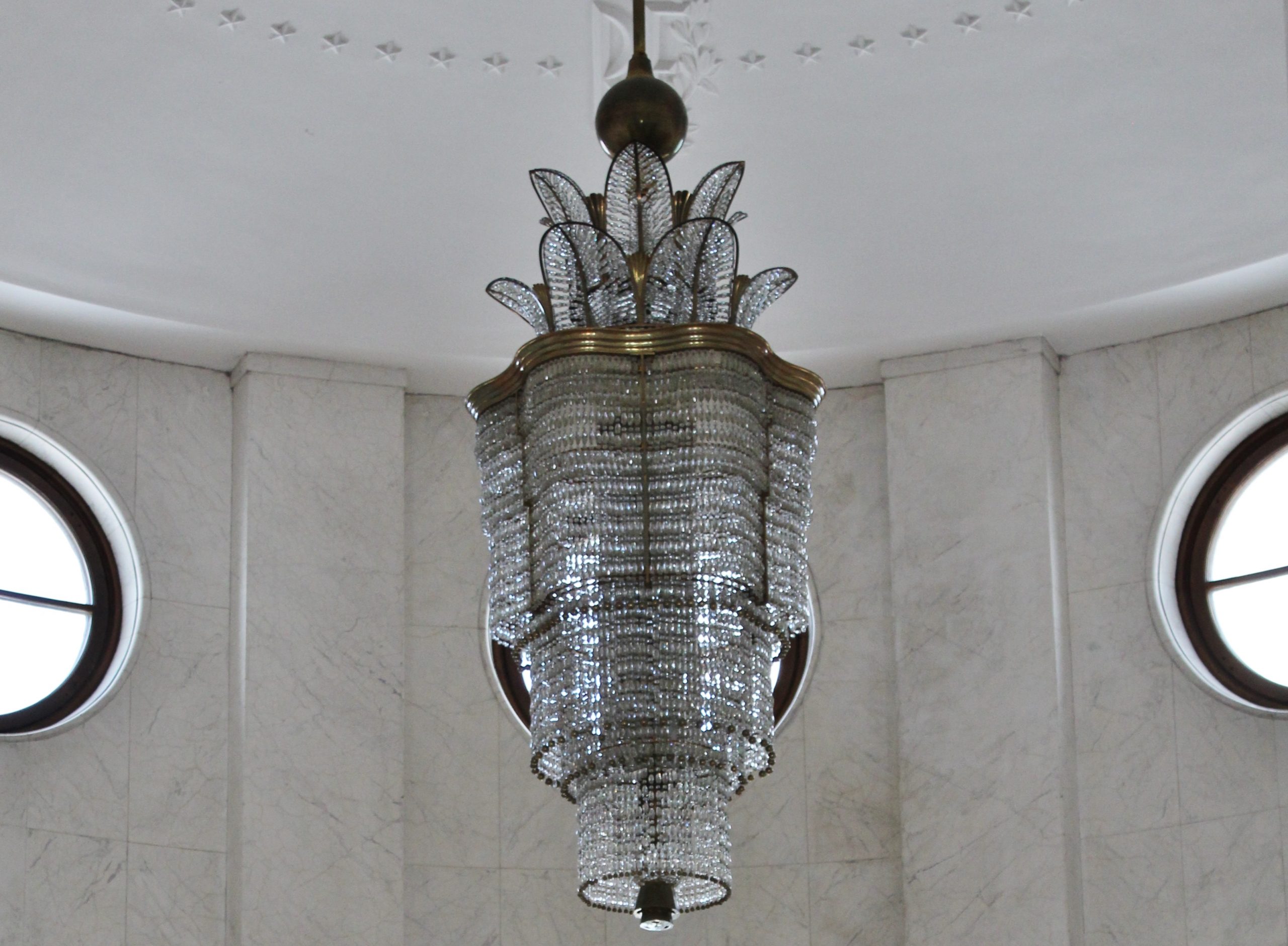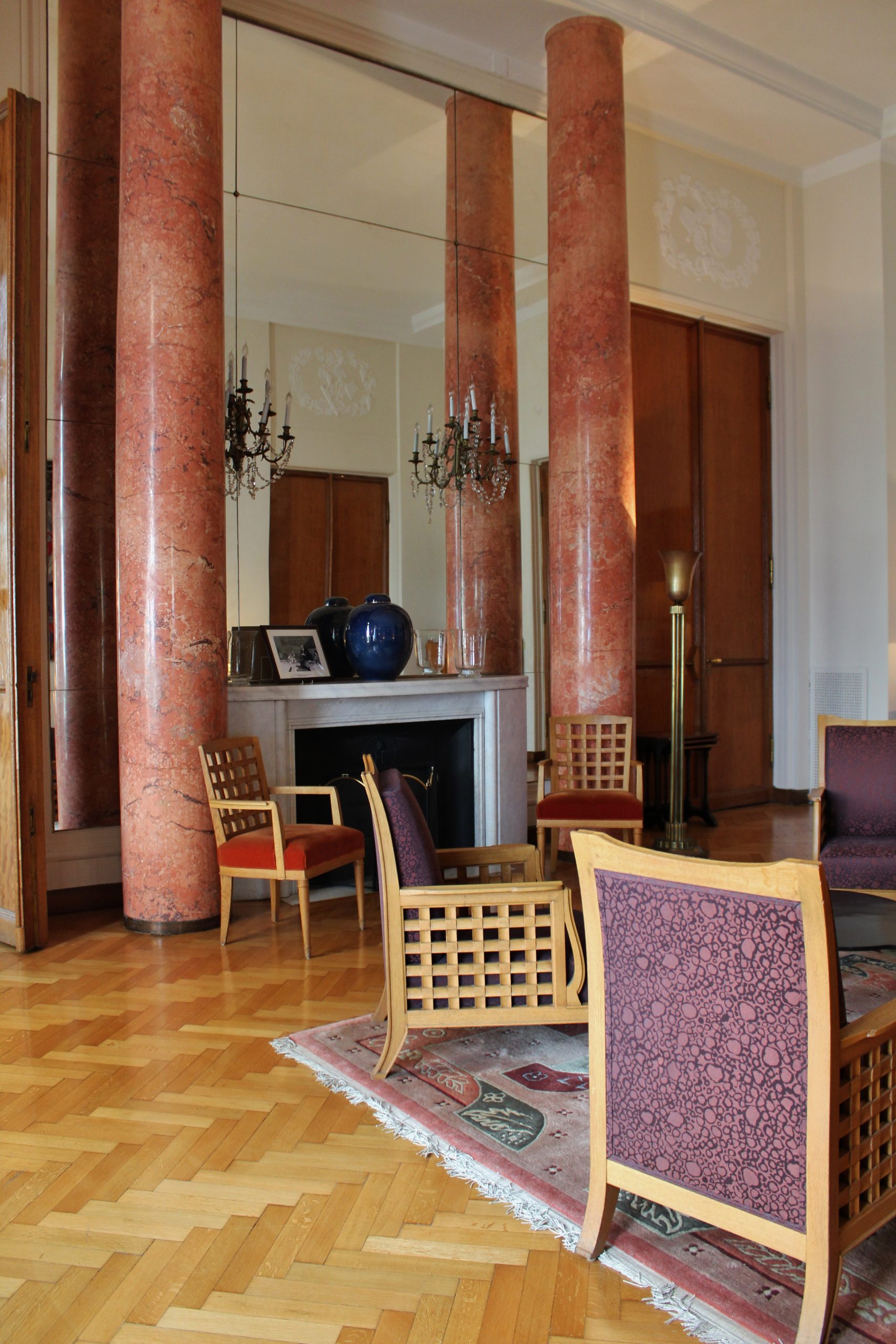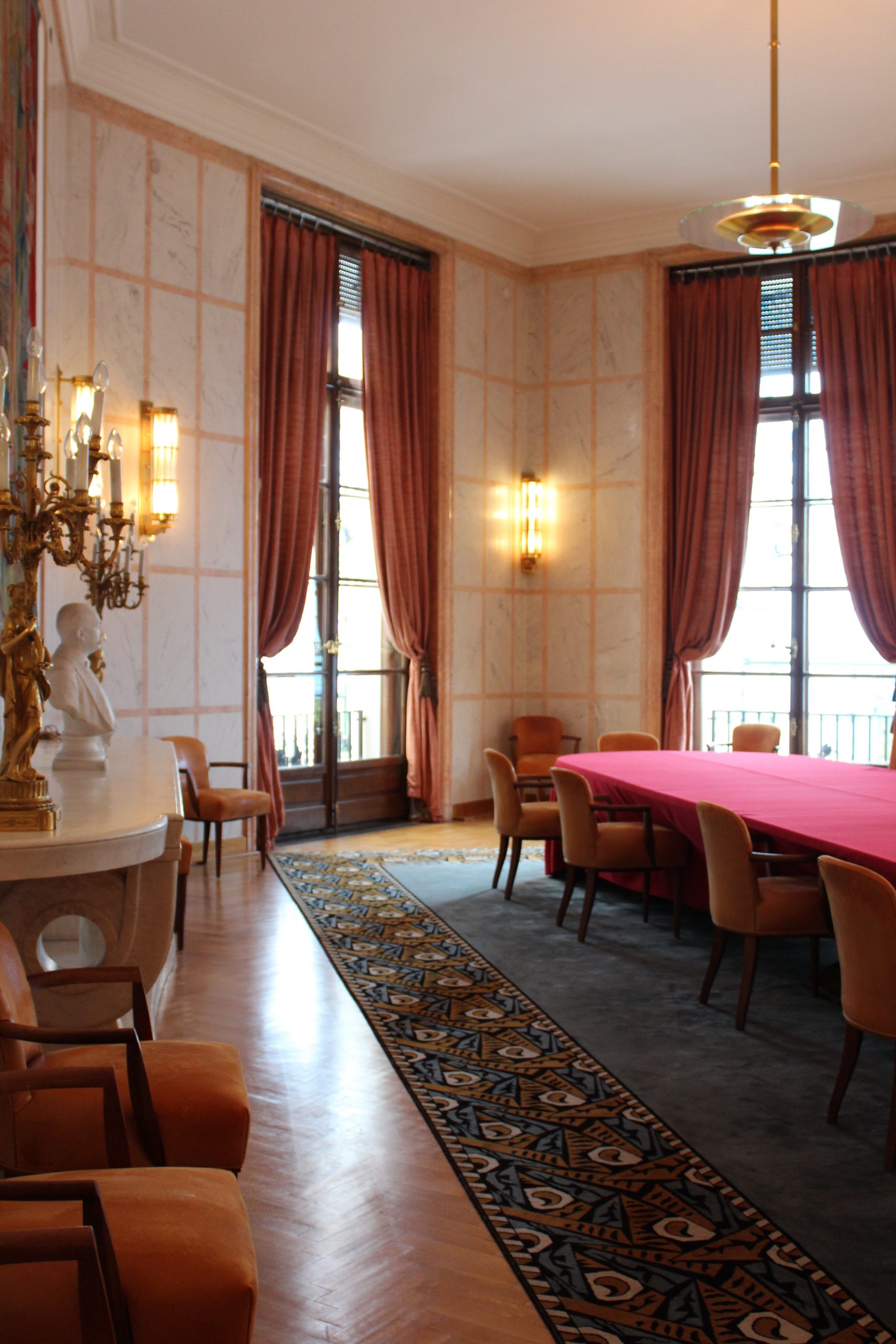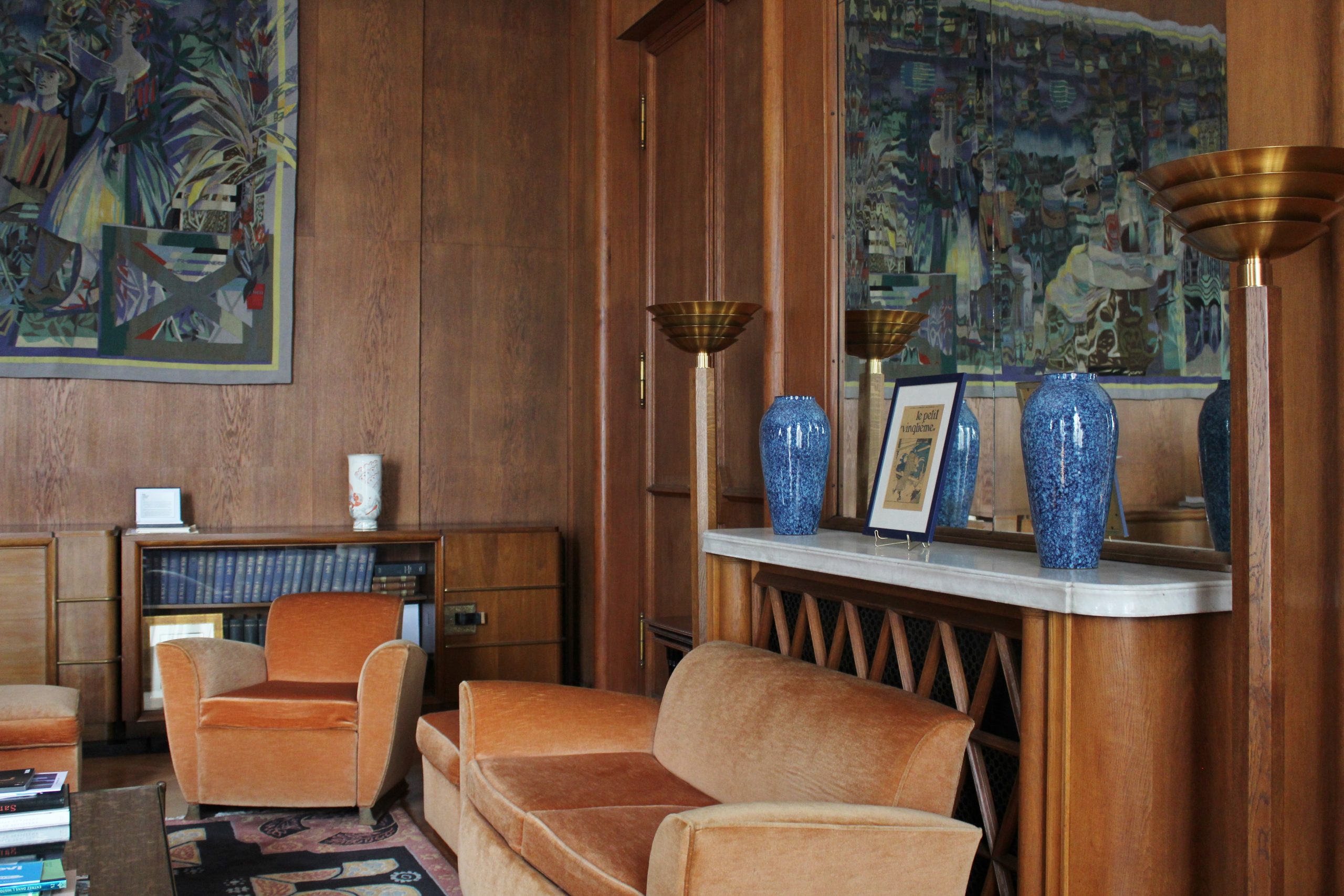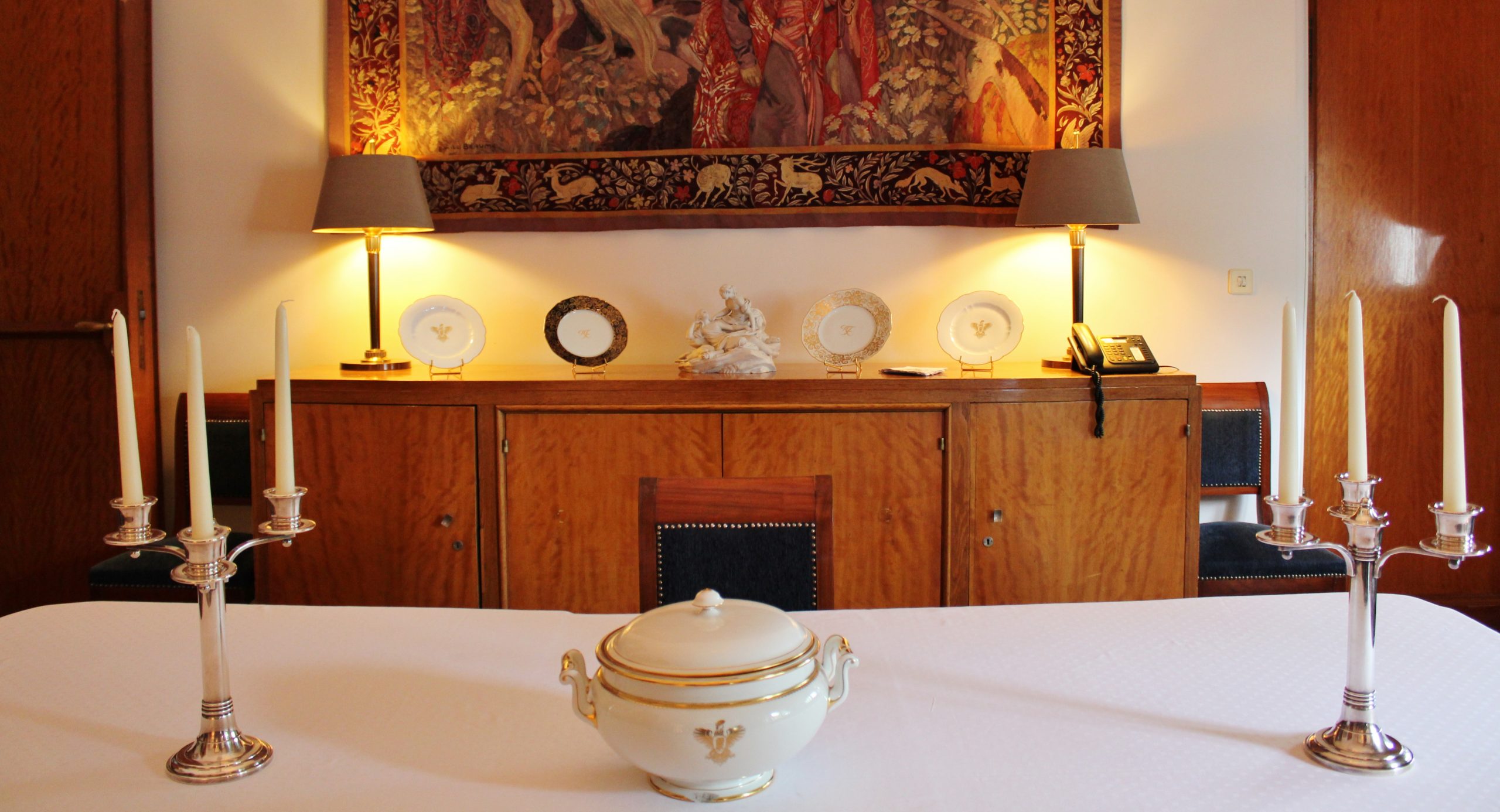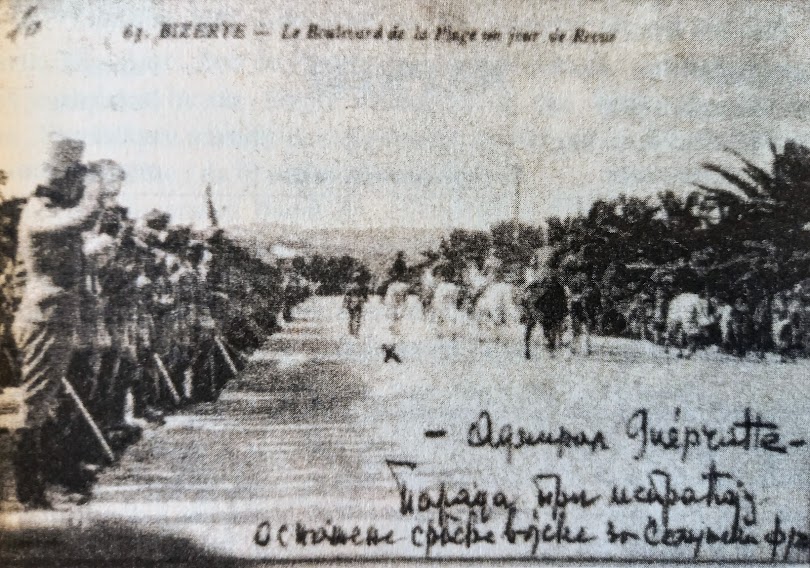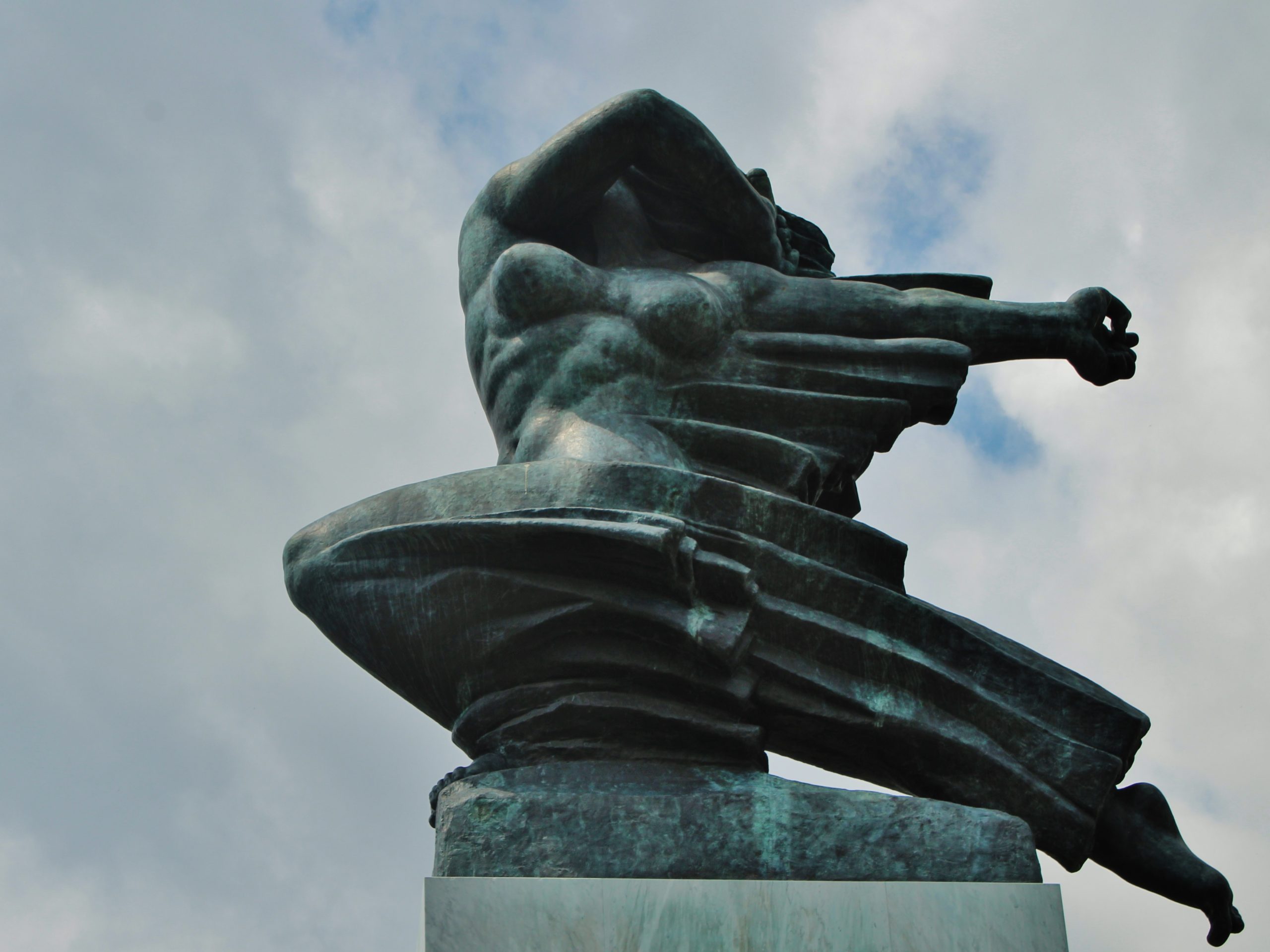GDE SE NALAZI?
ISTORIJAT

Digital positive from the original gelatin silver negative in the George Eastman Museum’s collection
Iako su planovi za kupovinu zgrade ambasade doneseni još početkom 20. veka, zemljište preko puta Kalemgdana kupljeno je tek 1923. godine. Ambasada je zvanično otvorena 21. decembra 1935. godine.
Tokom Drugog svetskog rata, od 1943. zgrada francuske ambasade bila je okupirana od strane nemačkih vlasti, ali je od 1945. godine zgrada ponovo vraćena Francuskoj. Jedan kratak period tokom 1999. godine, kada je došlo do prekida diplomatskih odnosa zbog bombardovanja Nato alijanse na Srbiju, zgrada nije vršila funkciju francuske ambasade.
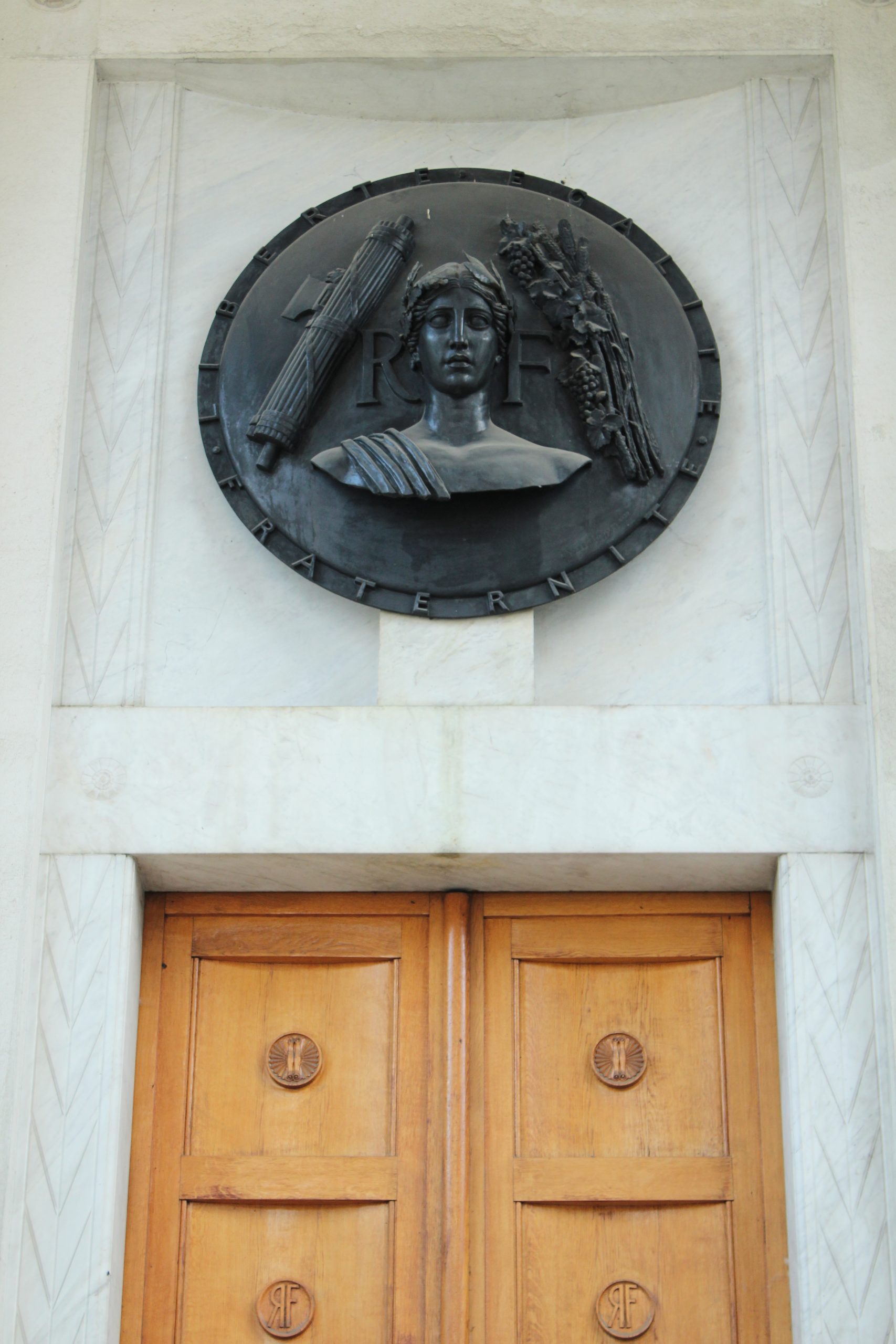
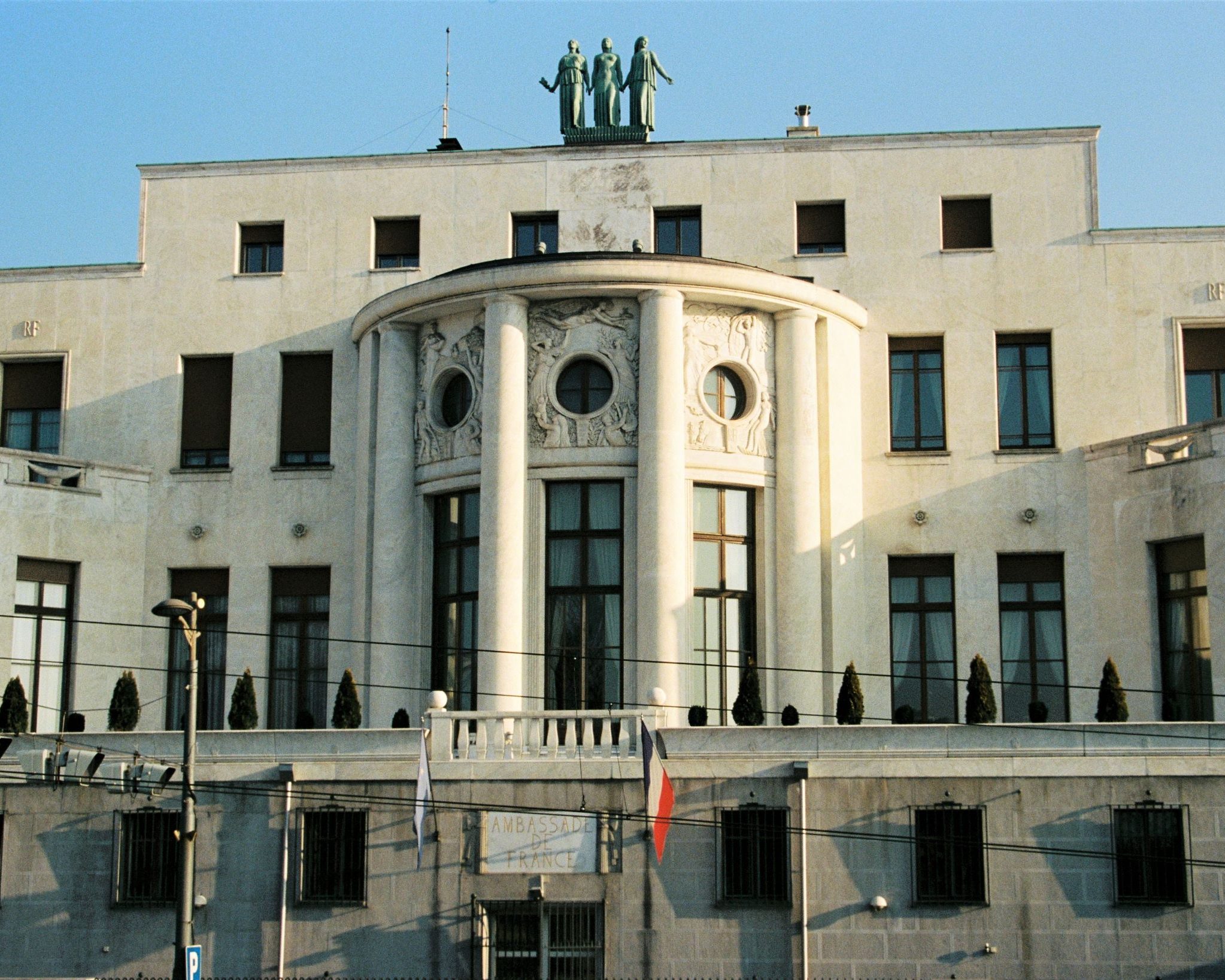
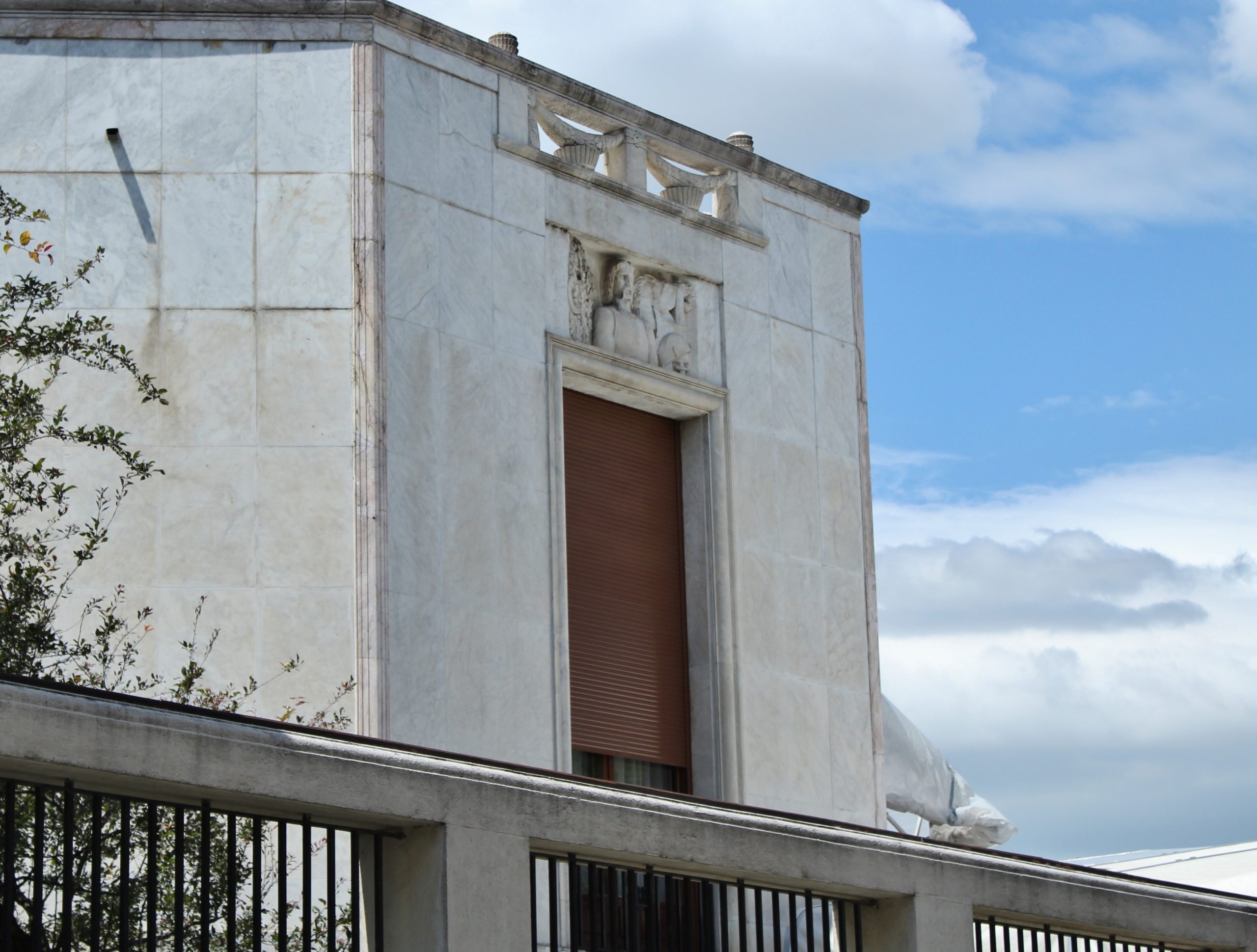
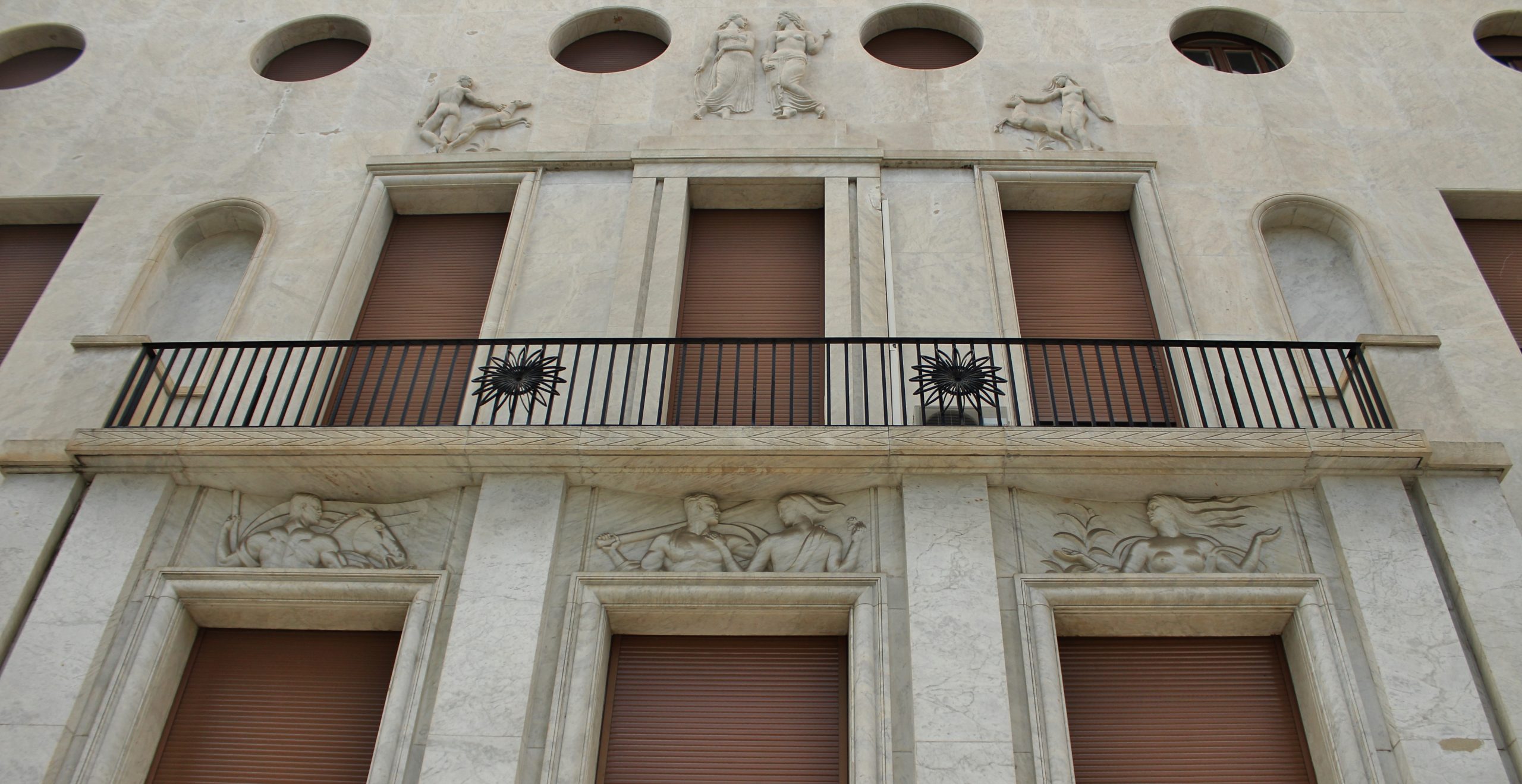
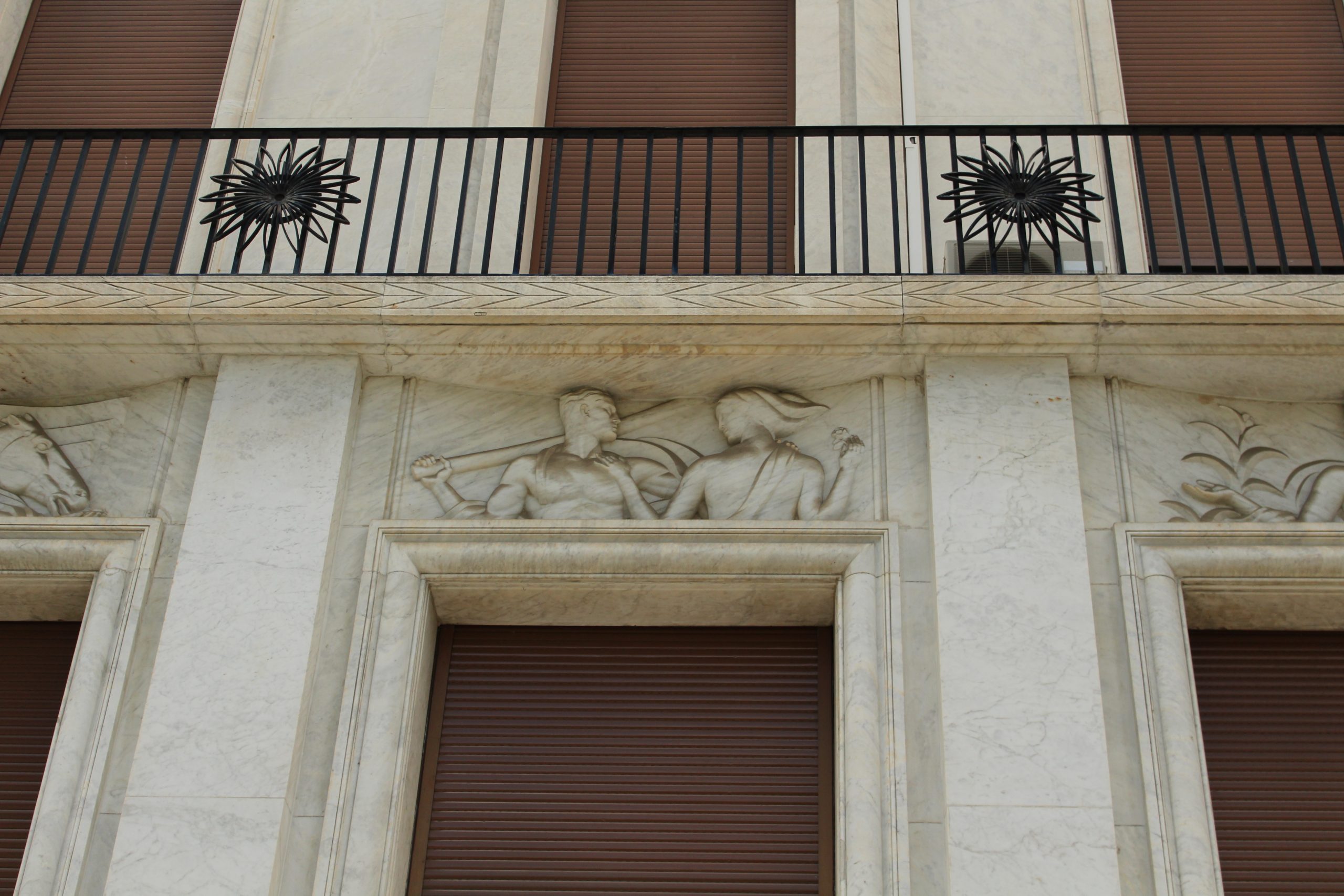
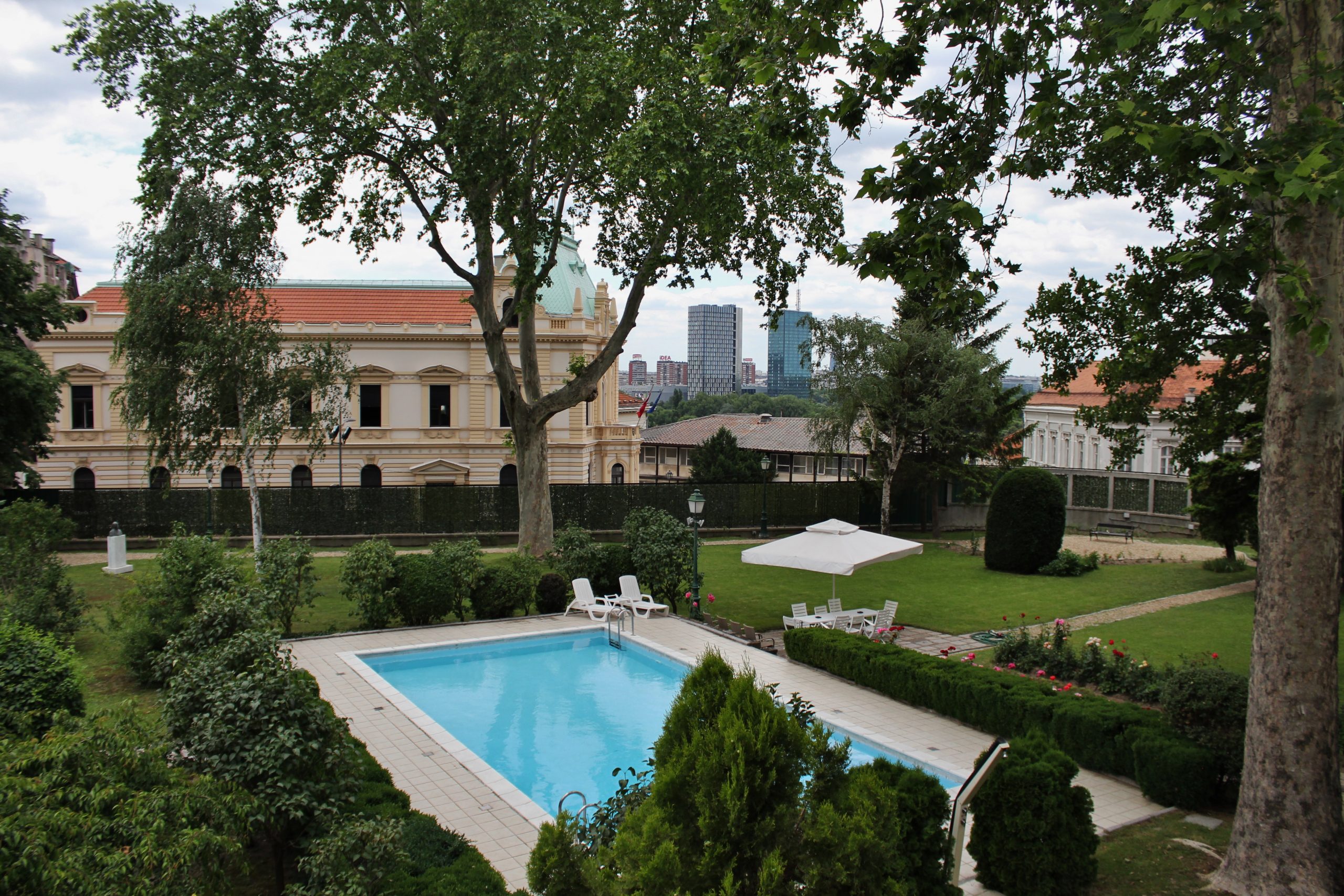
SPOLJAŠNJI IZGLED
UNUTRAŠNJI IZGLED
Veliki prostor je podeljen visokim dvojnim mermernim stubovima koji naglašavaju visinu i monumentalnost prostora. Deo koji je otvoren prema bašti dekorisao je vajar Sarabezol reljefnim medaljonima koji predstavalju velike francuske reke.u Nameštaj u ovoj i u drugim prostorijama ambasade naručen je u radionici porodice Lele, koja je čuvena po izradi skupocenog mobilijara. Celokupan nameštaj i reljefna dekoracija rađena je po nacrtima arhitekte Ekspera. Središnji deo prostorije zauzima veliki koncertni klavir.Iz velike sale ulazi se u niz manjih salona, opremljenih skupocenim nameštajem i tapiserijama. Tapiserije koje su visile na zidovima iz manufakture Goblen rađene po predlošcima čuvenog baroknog slikara Rubensa povučene su iz ambasade zbog svoje velike muzejske vrednosti. Zamenjene su tapiserijama modernih francuskih umetnika.
Iz svečanog salona ulazi se u Mali salon koji je ranije bio namenjen ženskim prijemima. Prostorija ima intimniji karakter sa kaminom i nameštajem u stilu ar deko iz radionice Andrea Deveša.U desnom isturenom krilu nalazi se velika dugačka trpezarija koja može da ugosti 36 osoba. Mermerna oplata zidova izvedena je jednostavnom gemetrizovanom dekoracijom, tokom Drugog svetskog rata je prekrivena novim slojem kreča, pa je tek rekonstrukcijom krajem 20. veka trpezariji vraćen prvobitni izgled.
Posebnu vrednost čuva i kancelarija ambasadora Francuske, prostorija obložena hrastovom oplatom , sa skpocenim nameštajem i originalnima Eksperovim nacrtima amabasade i mobilijara. Nameštaj u stilu ar dekoa izrađen je u radionici Žila Lelea.
Sprat je rezervisan za privatne odaje, koje su opremljene podjednako brižljivo biranim nameštajem i umetničkim delima. Malu trpezariju opremio je lično ambasador Rober de Dampjer nameštajem u stilu ar dekoa i trpezarisjkim stolom u stilu ampira(bidermajera).
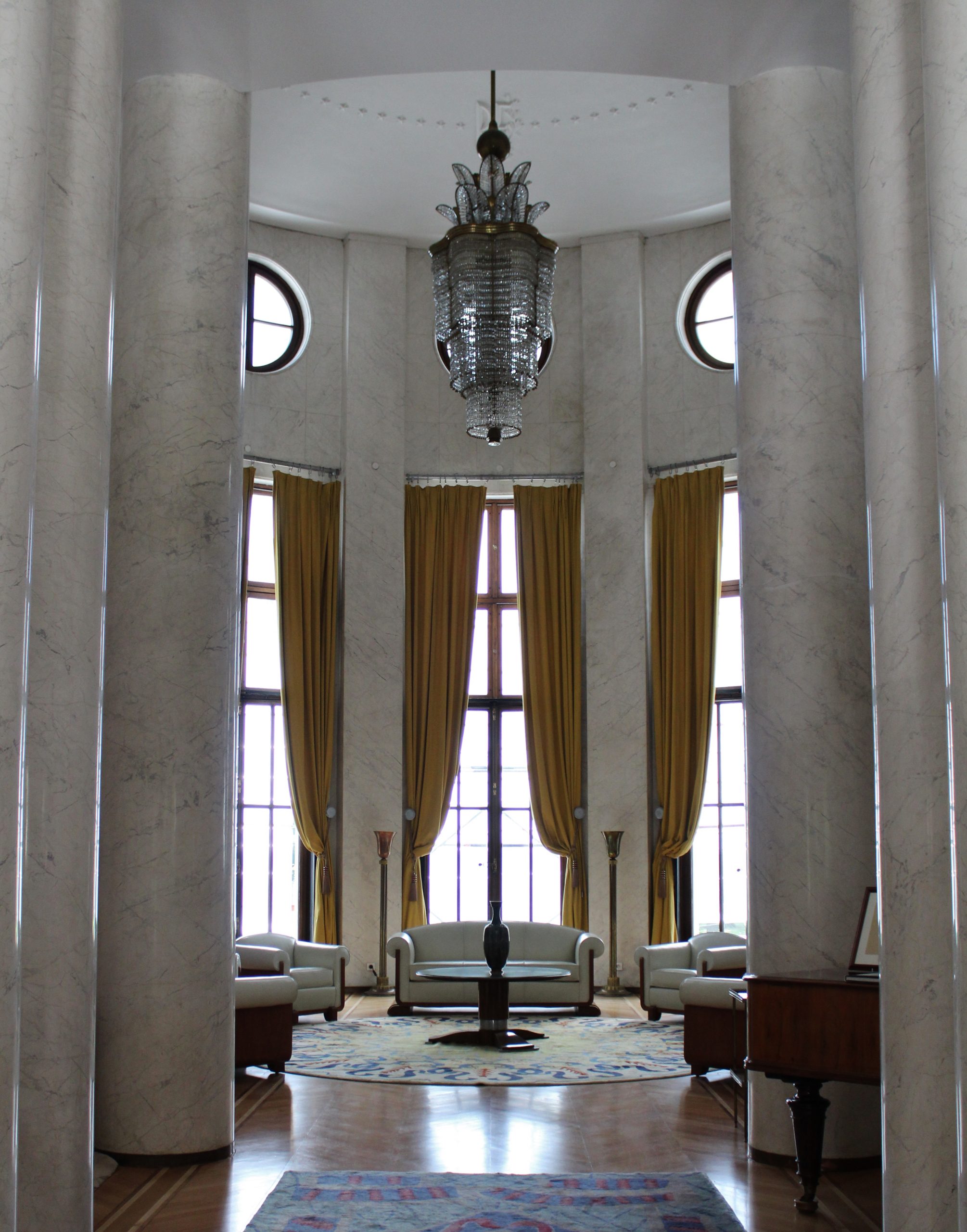
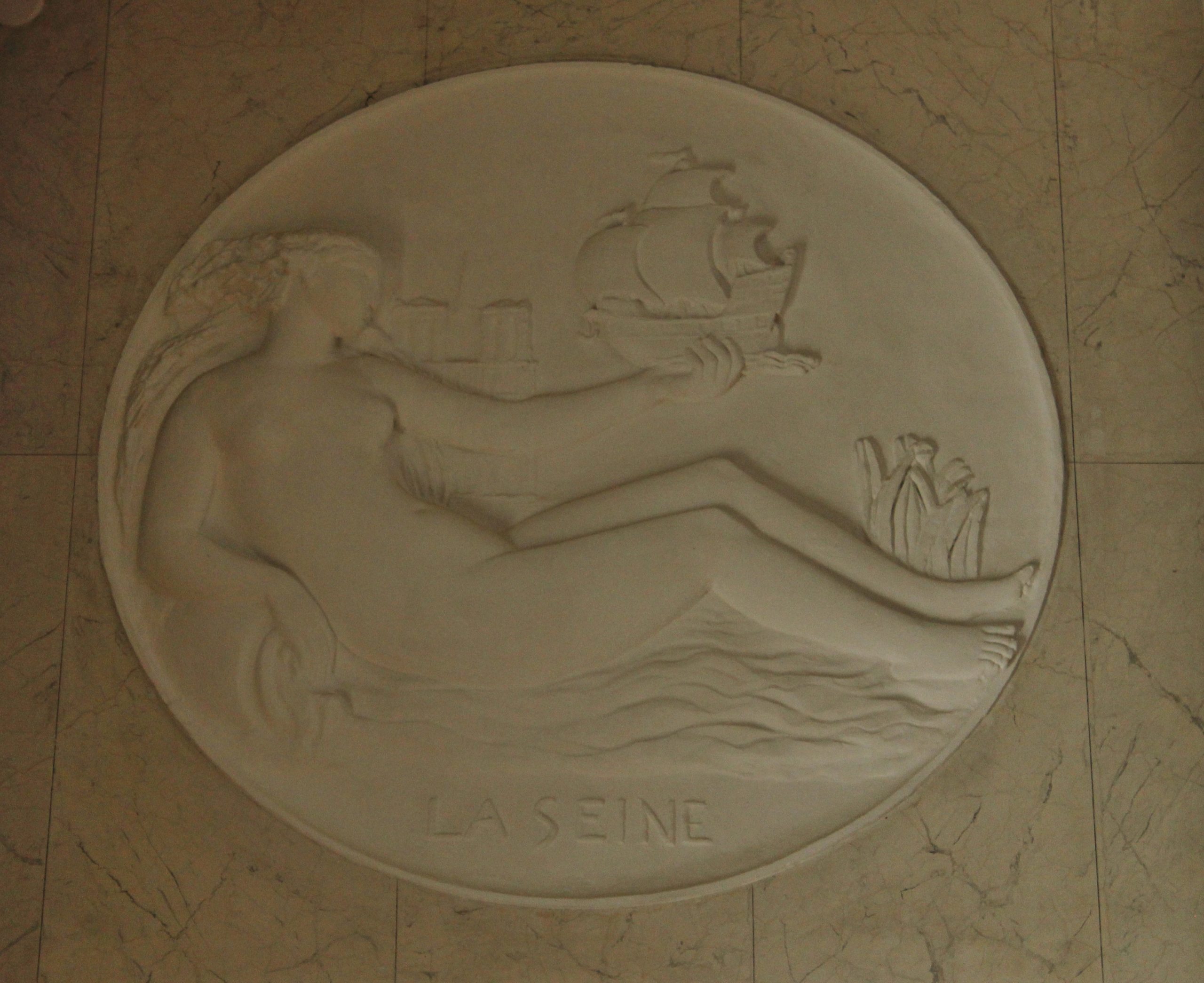
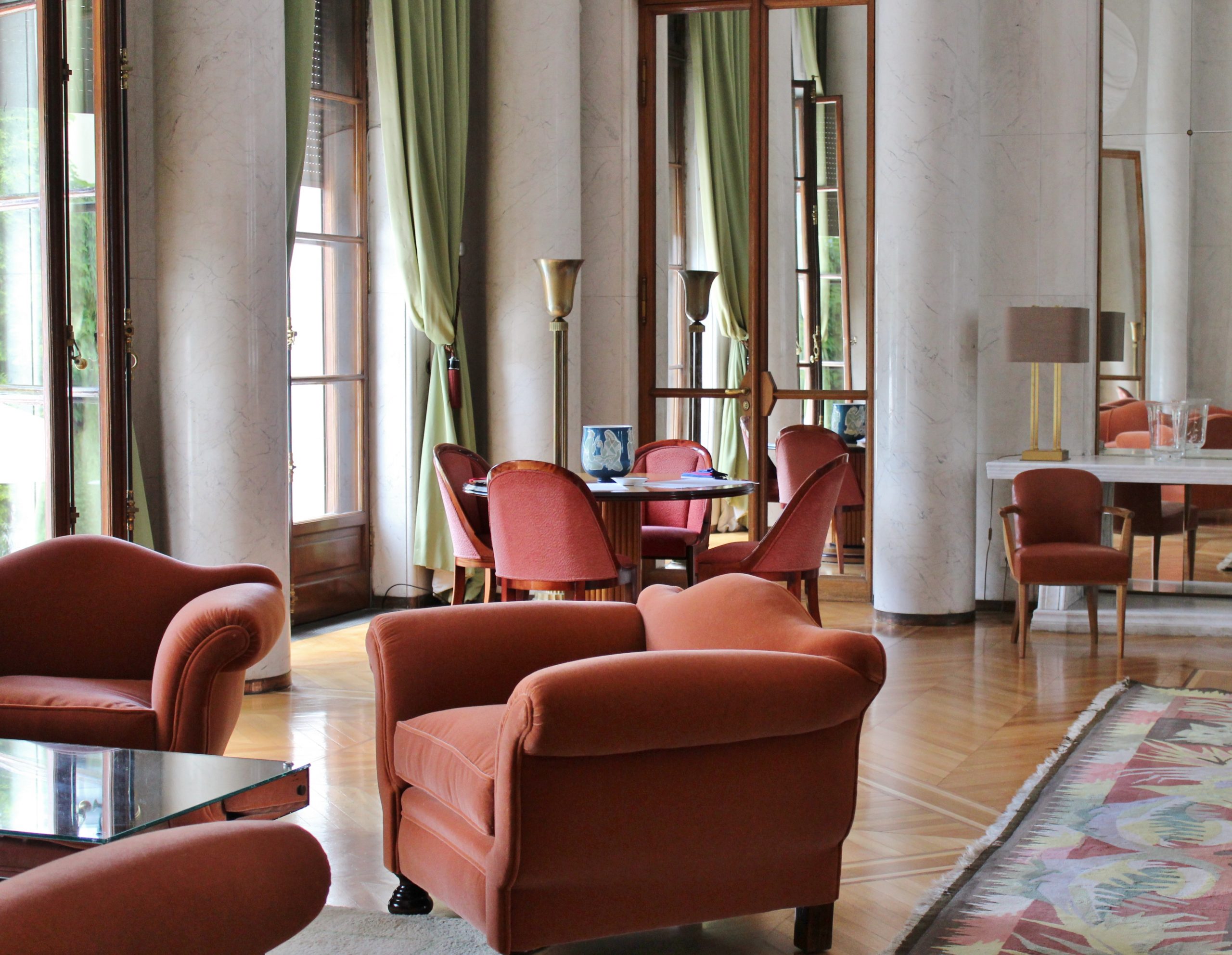

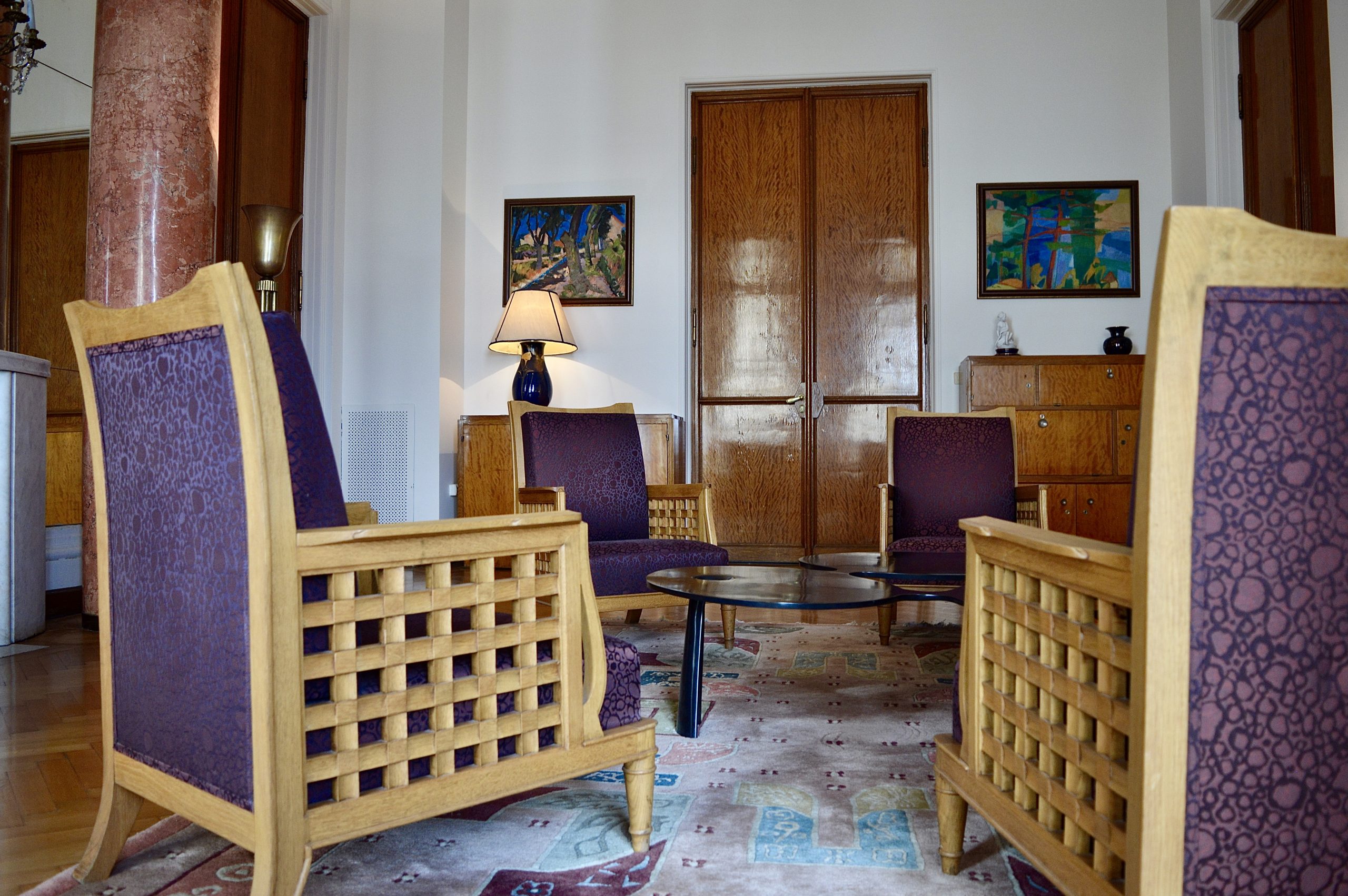
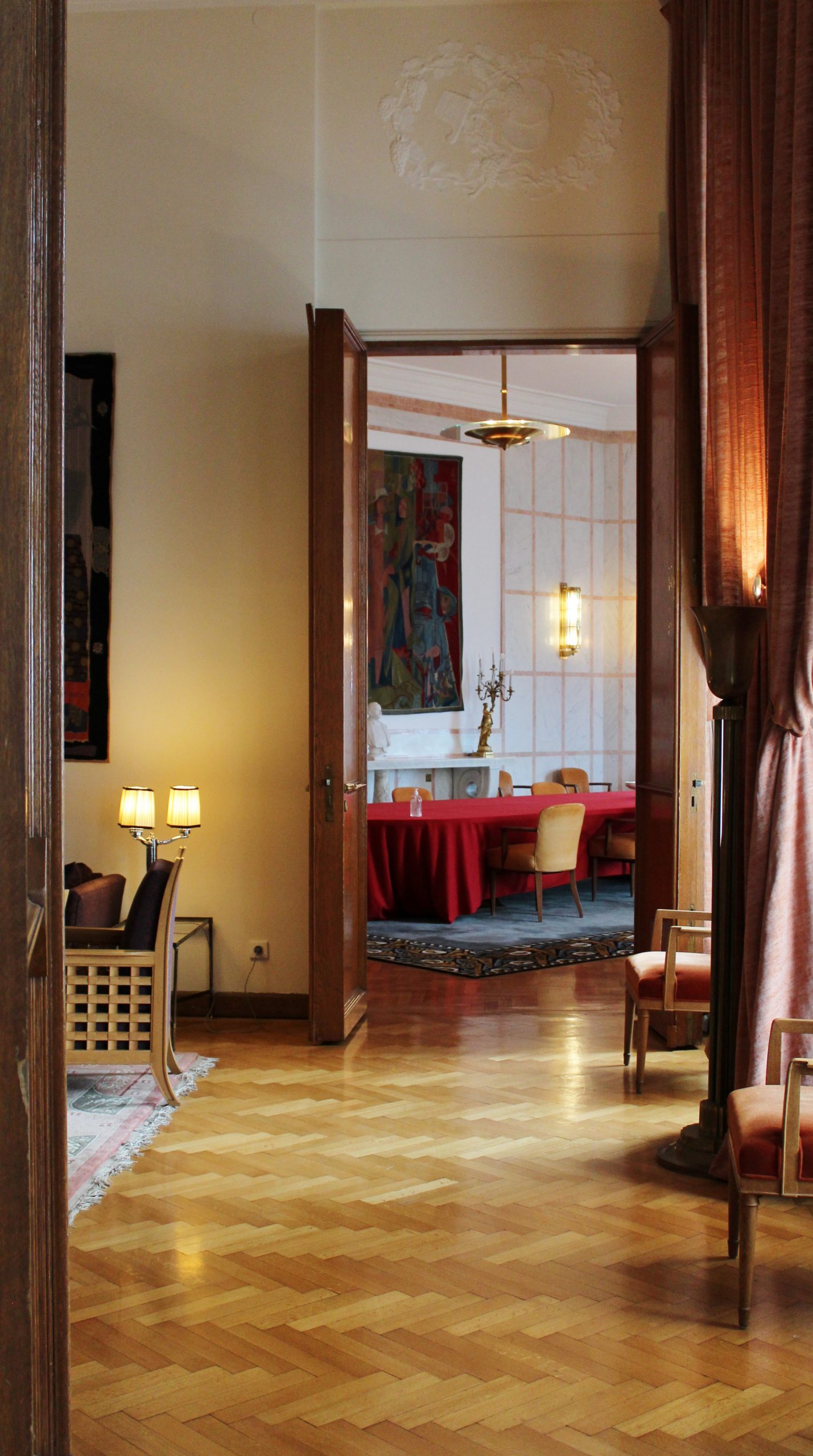
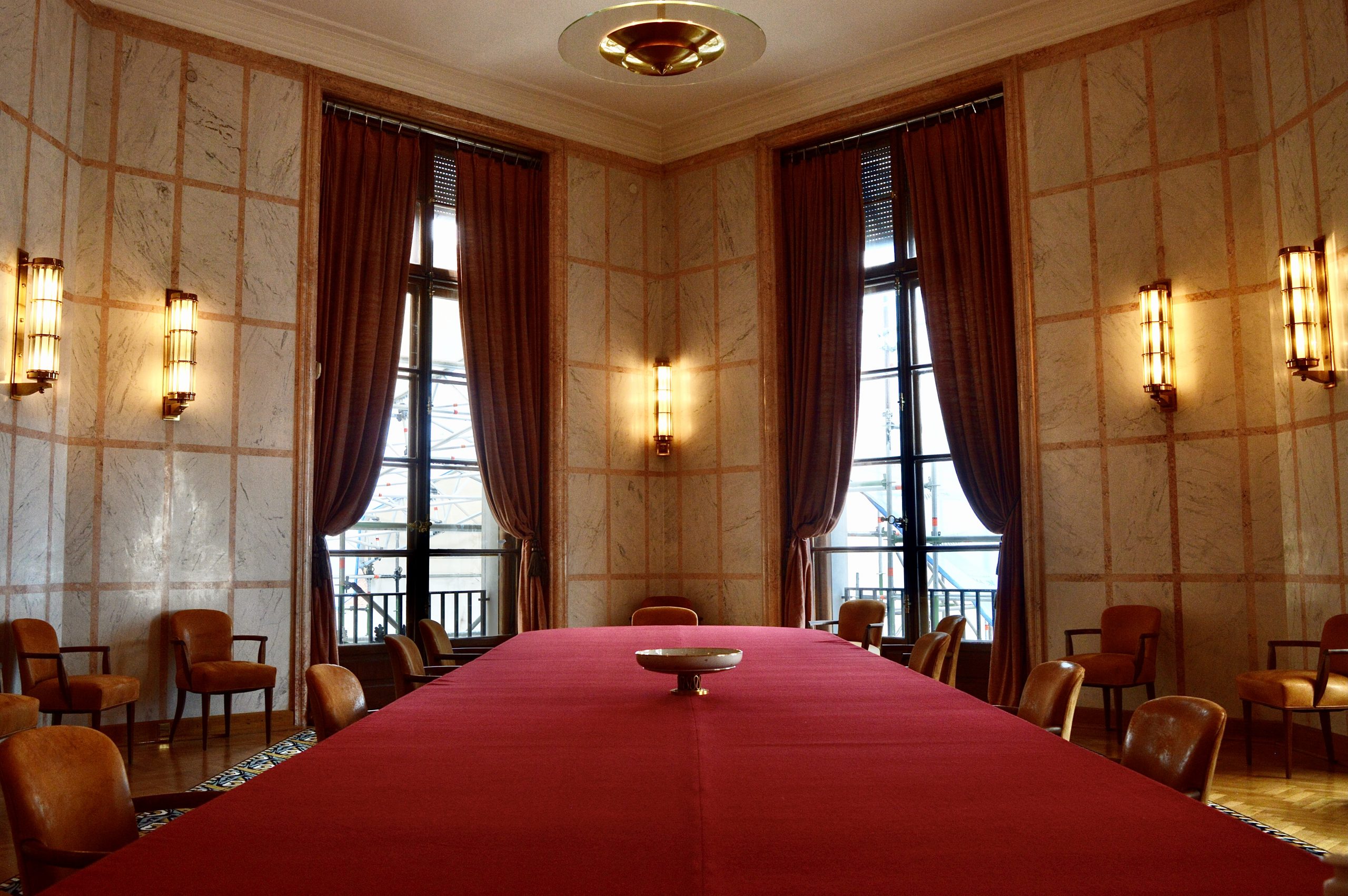
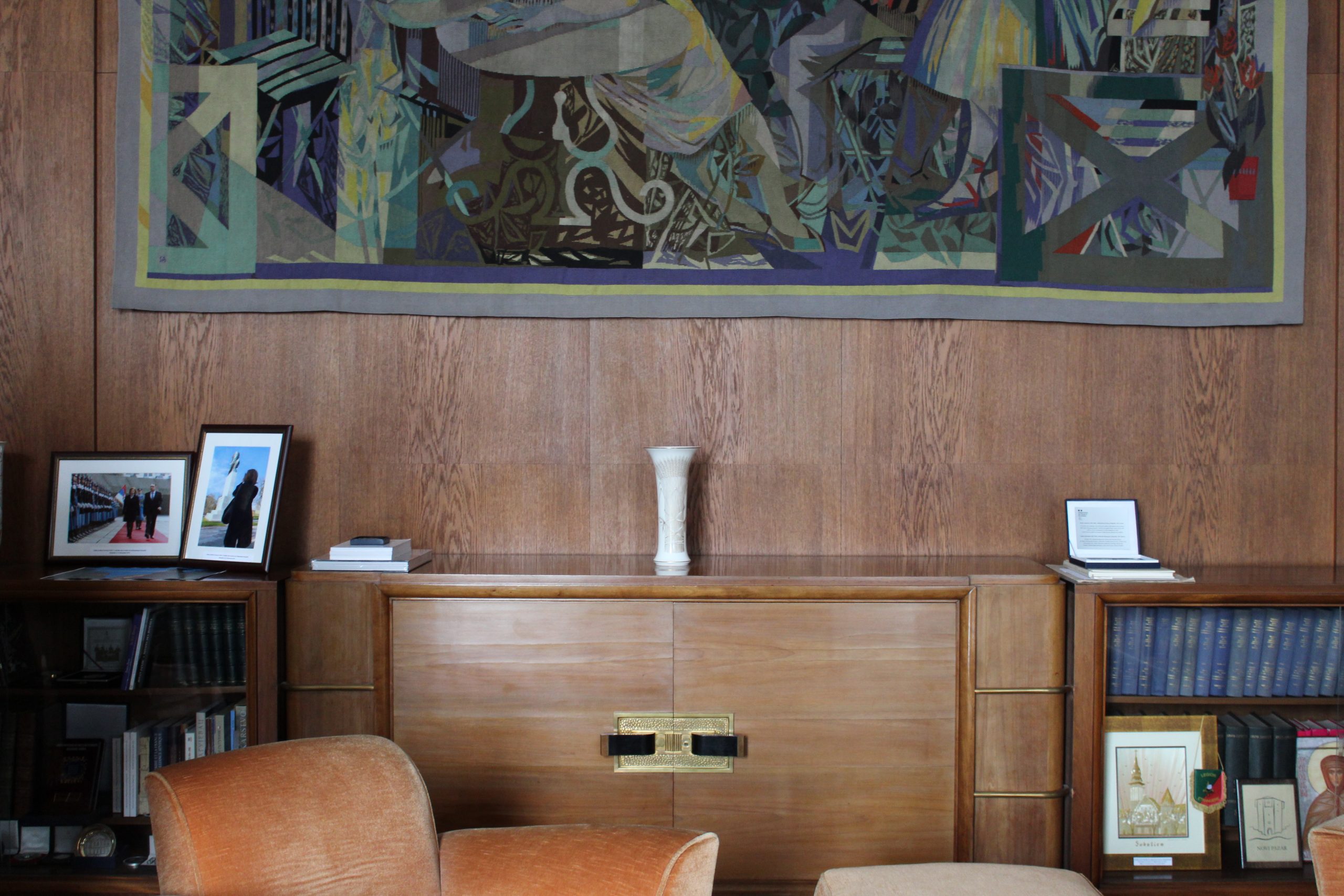
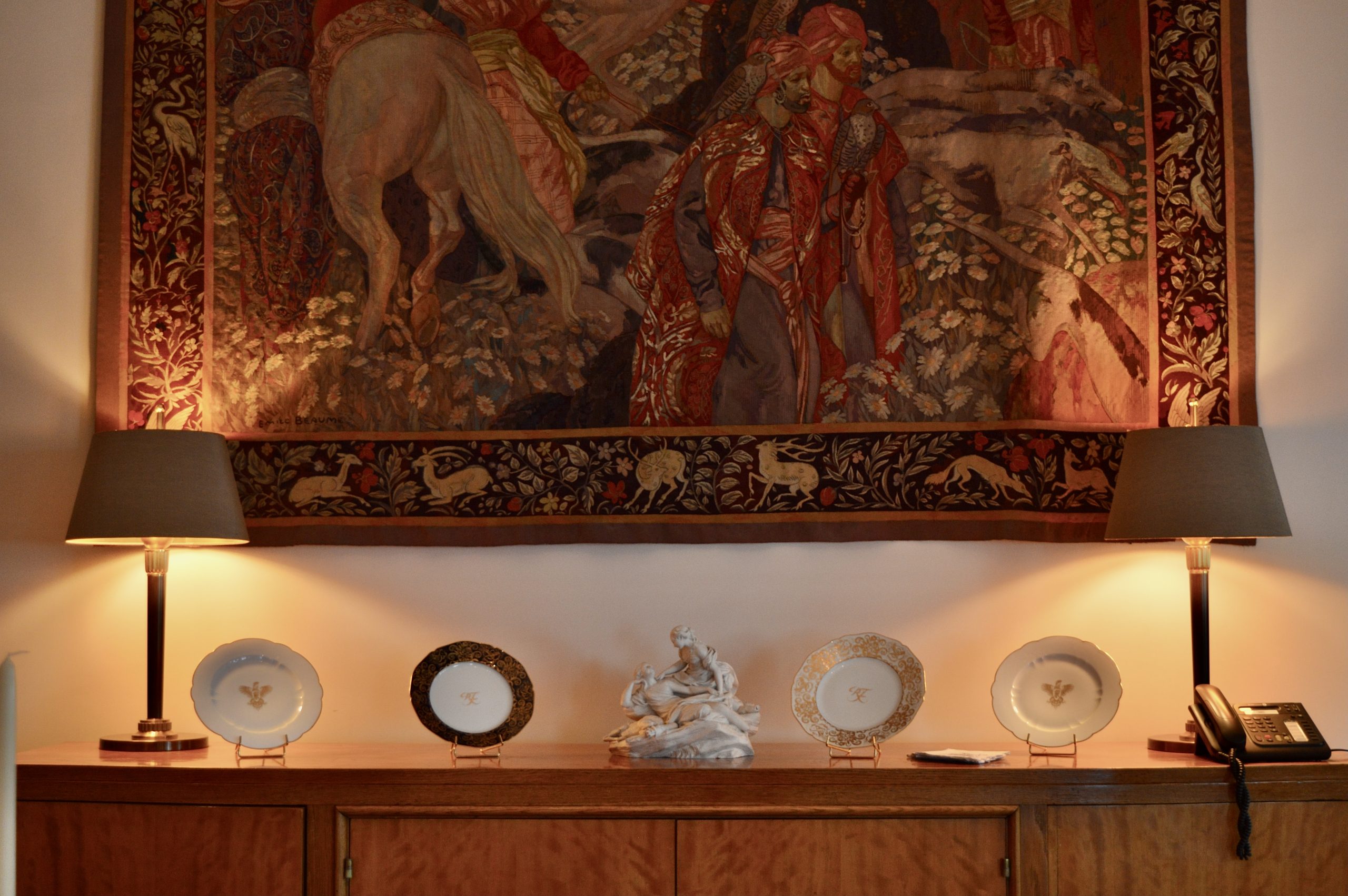
BILATERALNI ODNOSI
Uspostavljanje diplomatskih odnosa Francuske i Srbije počelo je ubrzo po formiranju kneževine Srbije dolaskom prvog francuskog konzula u Beograd 1839. godine. Od tada, do danas Srbija i Francuska, uz kraće prekide tokom Drugog svetskog rata i tokom 1999. godine, održavale su stabilne i prijateljske diplomatske veze. Odnosi dve zemlje posebno su bili bliski tokom Prvog svetskog rata, kada je Francuska, svojoj saveznici u ratu -Srbiji, pružila značajnu finansijsku i materijalnu pomoć. Brojni srspki vojnici i civili boravili su su od 1915. godine do kraja rata u francuskoj bazi Bizerta na teritoriji severne Afrike (današnji Tunis).

Improvizana škola za srpske učenike u Bizerti, na tabli se vidi natpis Vive le Serbie i Živila Francuska , privatna arhiva
Uspostavljanje diplomatskih odnosa Francuske i Srbije počelo je ubrzo po formiranju kneževine Srbije dolaskom prvog francuskog konzula u Beograd 1839. godine. Od tada, do danas Srbija i Francuska, uz kraće prekide tokom Drugog svetskog rata i tokom 1999. godine, održavale su stabilne i prijateljske diplomatske veze. Odnosi dve zemlje posebno su bili bliski tokom Prvog svetskog rata, kada je Francuska, svojoj saveznici u ratu -Srbiji, pružila značajnu finansijsku i materijalnu pomoć. Brojni srspki vojnici i civili boravili su su od 1915. godine do kraja rata u francuskoj bazi Bizerta na teritoriji severne Afrike (današnji Tunis).
Francuska je u Bizerti pružila zaštitu i podršku srpskim vojnicima i civilima. U tome se naročito istakao tadašnji guverner Bizerte admiral Emil Geprat. Prilikom posete admirala Geprata Beogradu 1930. godine, gradjani Beograda su ga na rukama nosili od železničke stanice do Slavije, pa je ulica kojom su prolazili nazvana u njegovu čast Ulica admirala Geprata, kako se i danas zove.
Podrška je nastavljena krajem Velikog rata kada je Francuska primila 3000 mladih Srba stipendirajući njihovo školovanje na francuskim školama i univerzitetima.
U znak zahvalnosti za podršku Srbiji, 1930. godine u parku Kalemegdan podignut je spomenik koji je izradio vajar Ivan Meštrović. Spomenik prikazuje žensku figuru koja drži mač, kao alegoriju Francuske koja u jurišu pruža pomoć Srbiji.
U Beogradu je u međuratnom periodu osnovana i francuska škola San Žozef koju su osnovale časne sestre reda Uspenja Marije 1926. godine, u Rankeovoj ulici 4(danas Stomatološki fakultet). Zbog početka Drugog svetskog rata ustanova je prestala sa radom 1941. godine. Zgrada škole izgrađena je prema projektu tima arhitekata koji su činili Navij, Šoke i Milan Zloković. Nastava se održavala na srpskom i na francuskom jeziku, a svi predavači bili su Francuzi. Francuska škola i danas deluje u Beogradu.
Posle turbulentnih događaja tokom Drugog svetskog rata, kada je došlo do prikida diplomatskih odnosa, saradnja je nastavljena u okviru Jugoslavije, a posle demokratskih promena u Srbiji, odnosi dve zemlje jačaju i omogućavaju saradnju na svim nivoima.
Učesnici projekta BEOgradska avanTURA imali su priliku da obidju ambasadu Republike Francuske 15. 06. 2021. godine. Tom prilikom su razgledali zgradu ambasade uz stručno vodjenje službenika ambasade i imali mogućnost da slikaju sve prostorije i umetničke vrednosti u njima. Učesnike projekta srdačno je pozdravio i ugostio francuski ambasador Žan Luj Falkoni.

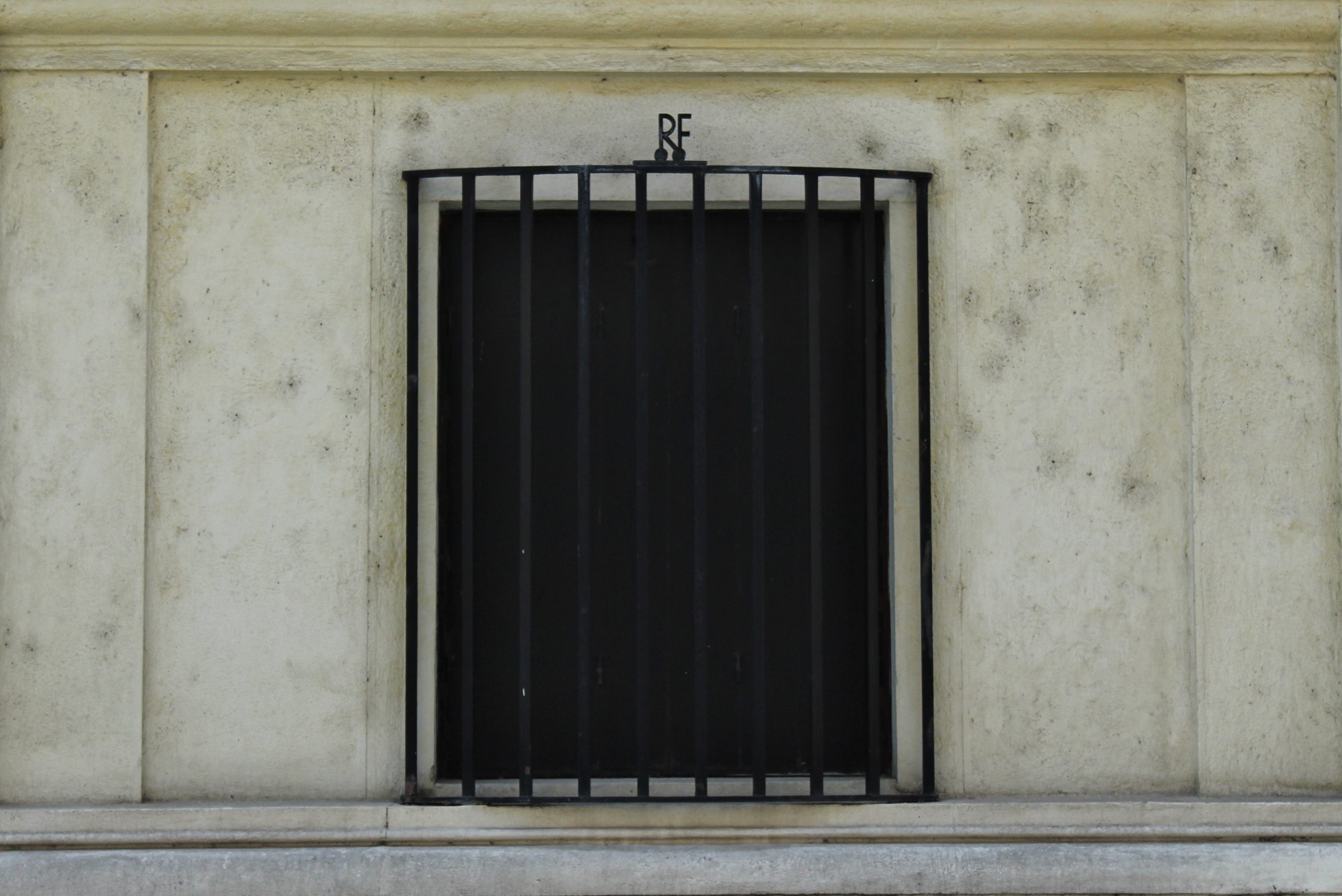
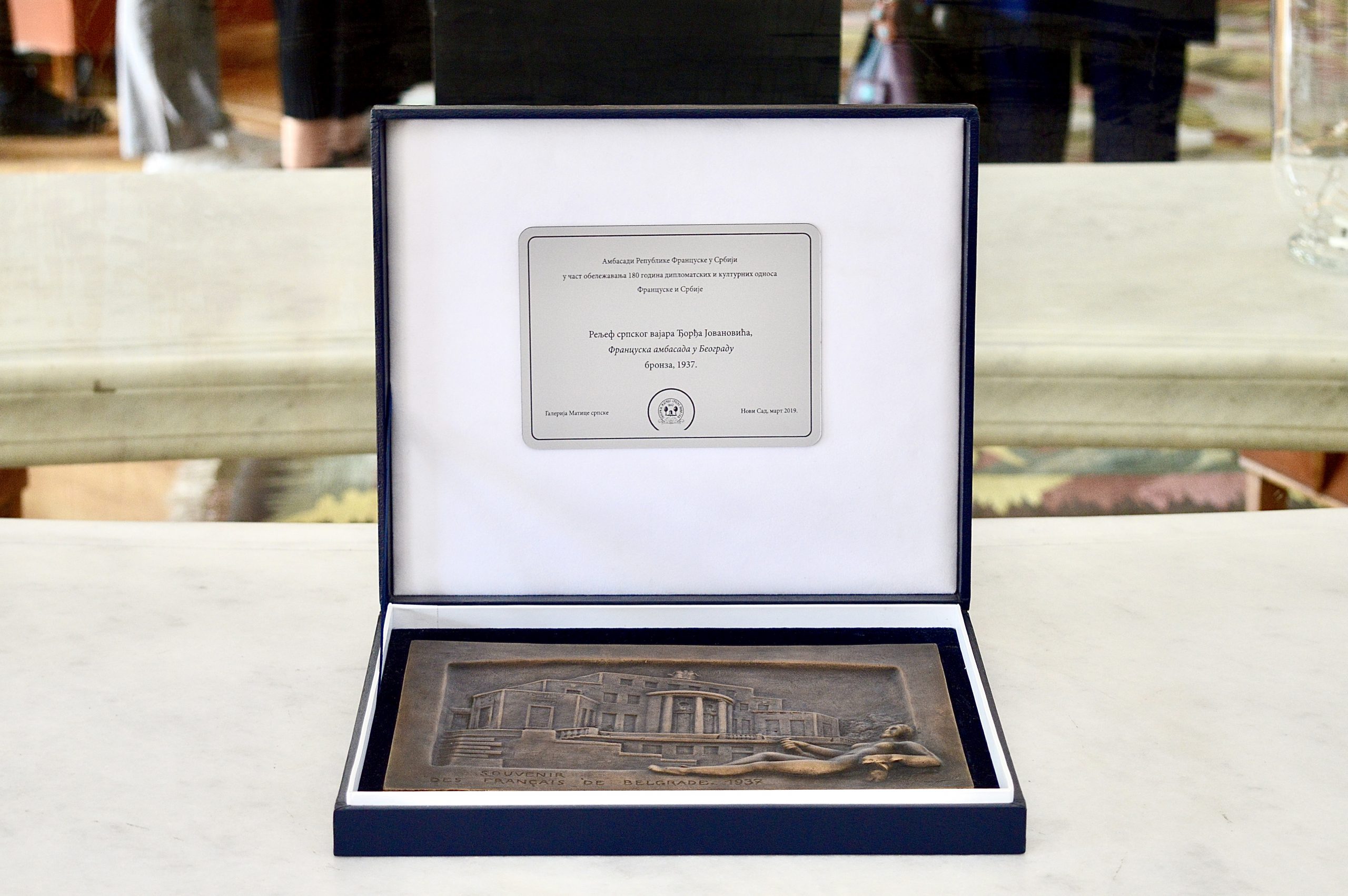
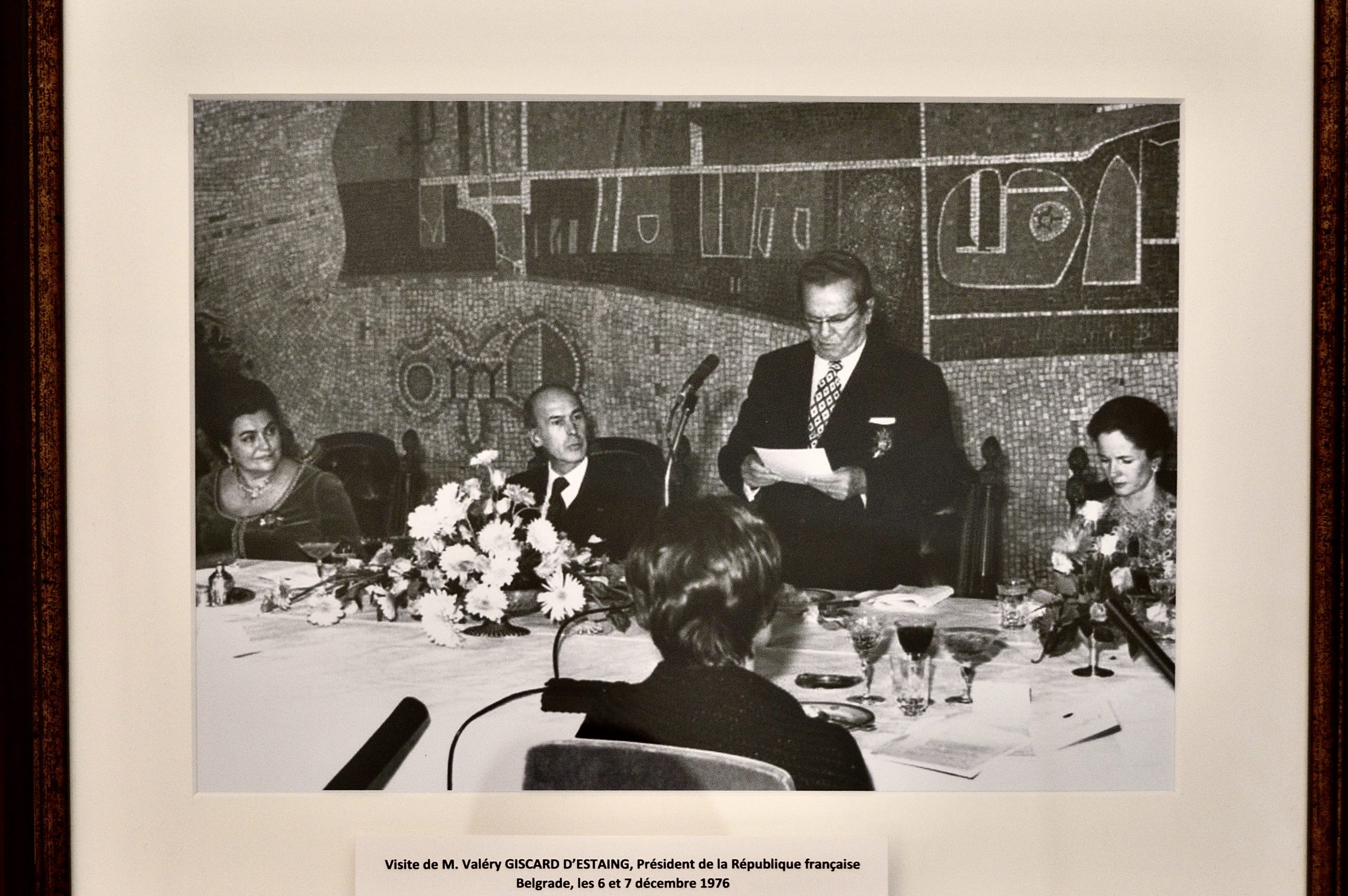
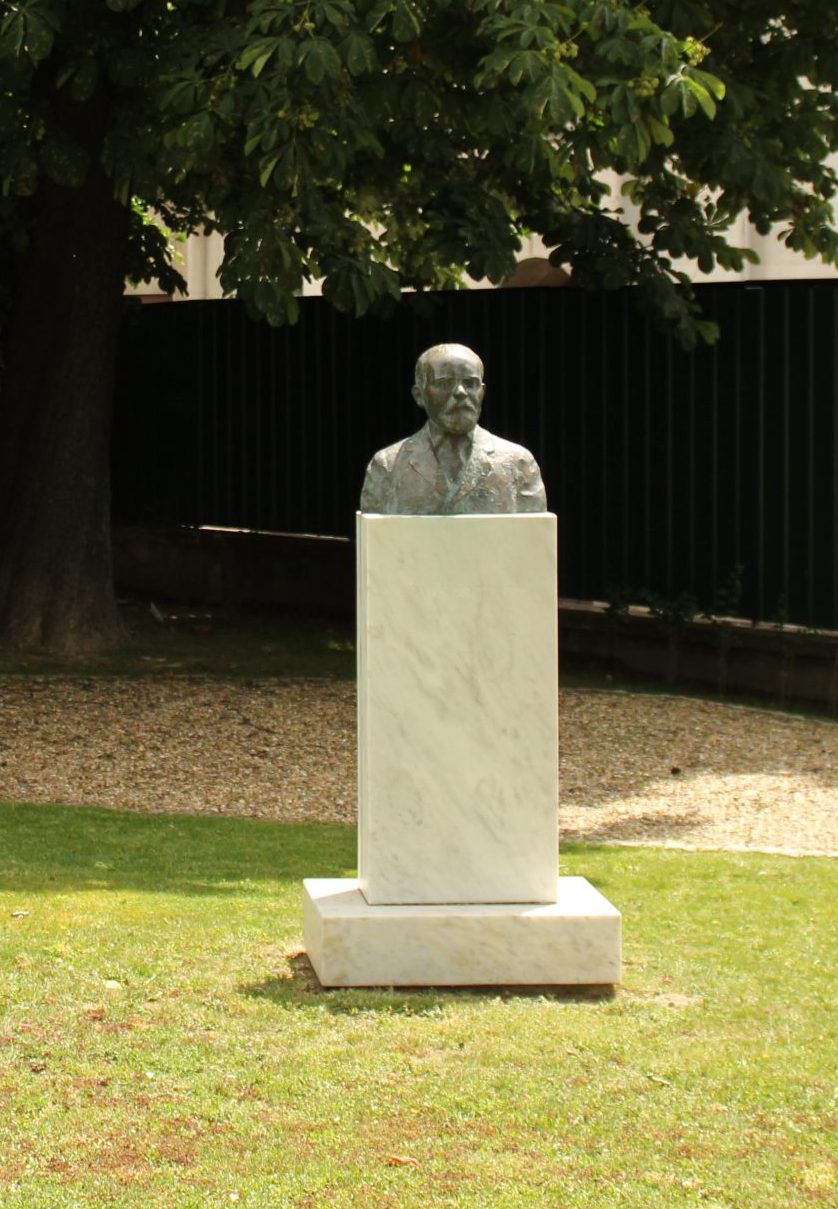

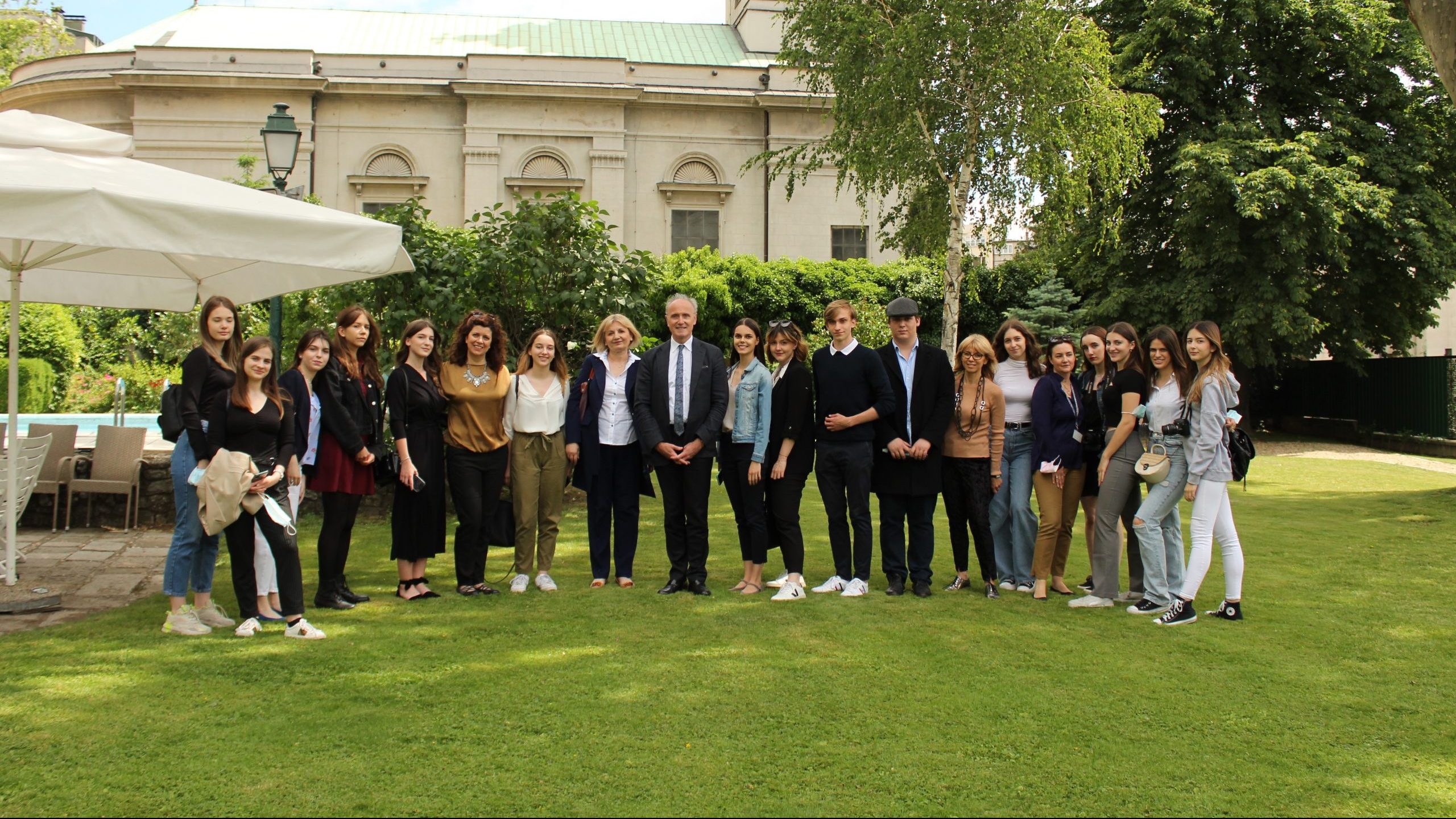
Pripremili : Sofija Jovanović, Ognjen Nerandžić, Darija Njego i Jovana Dimitrijević

